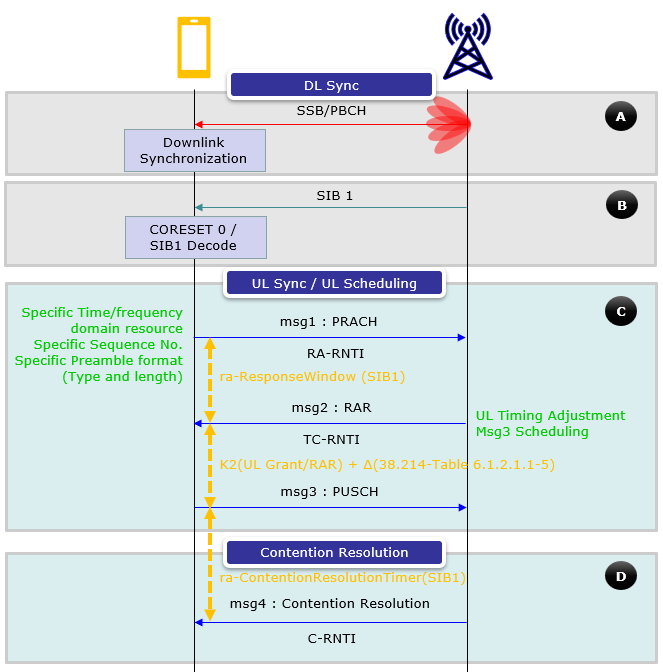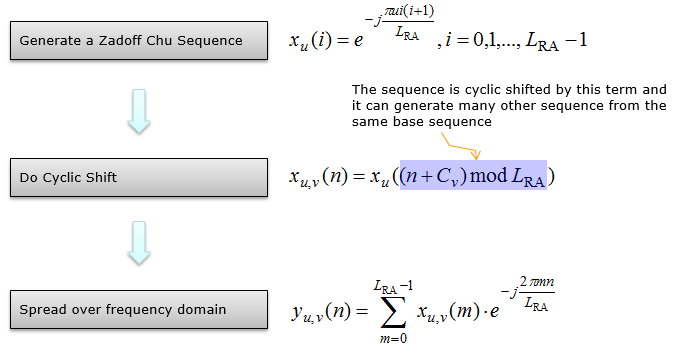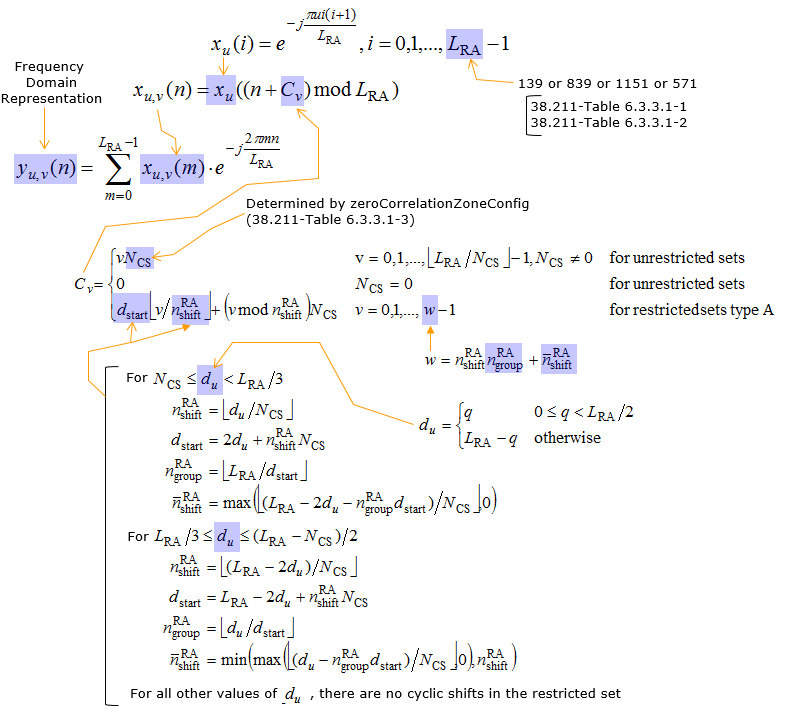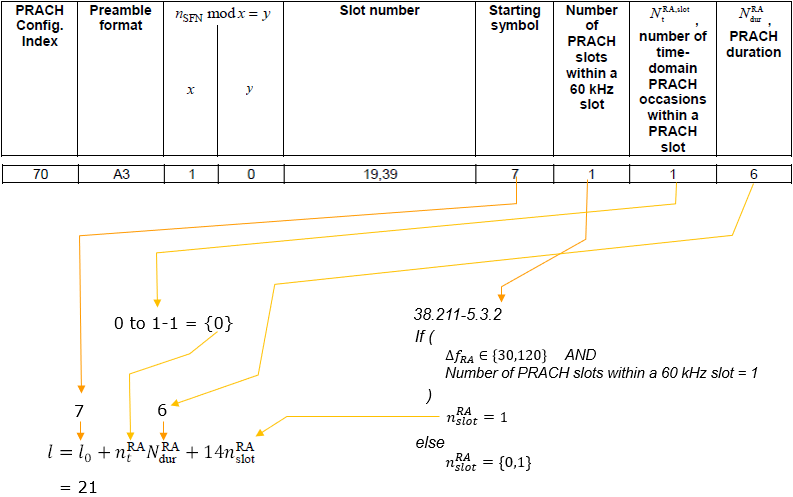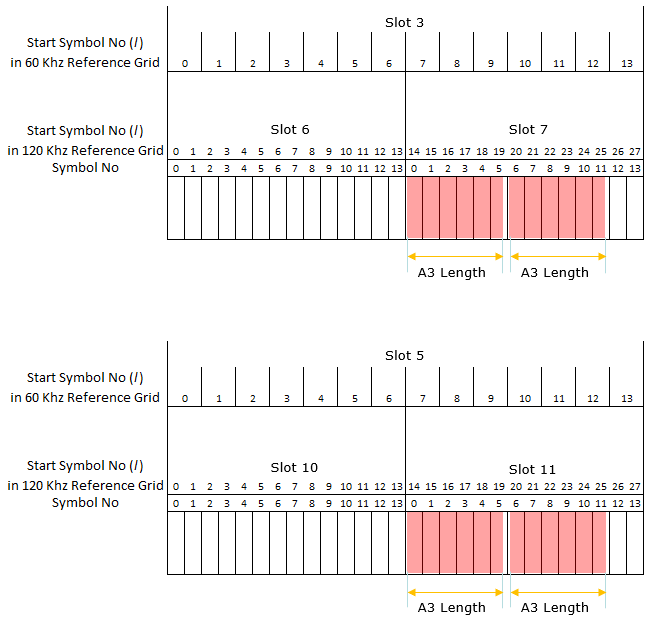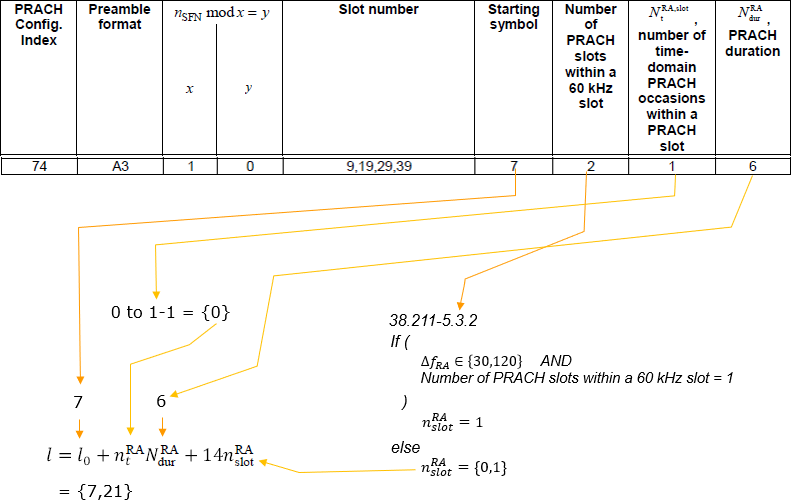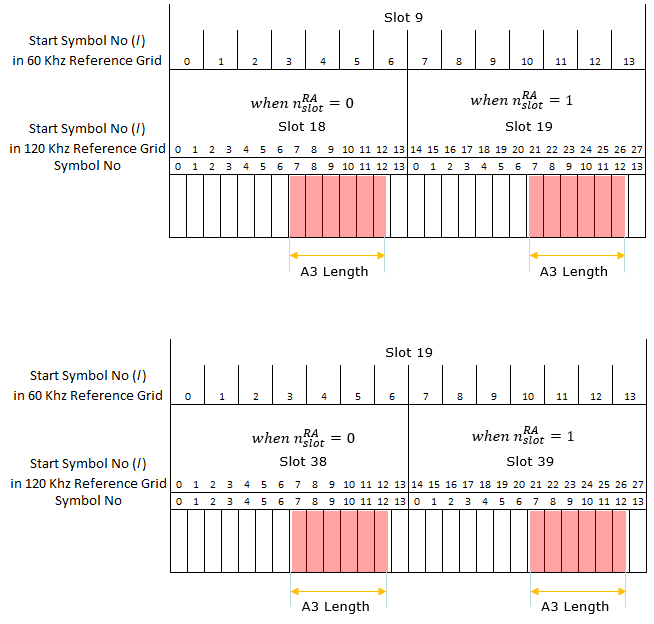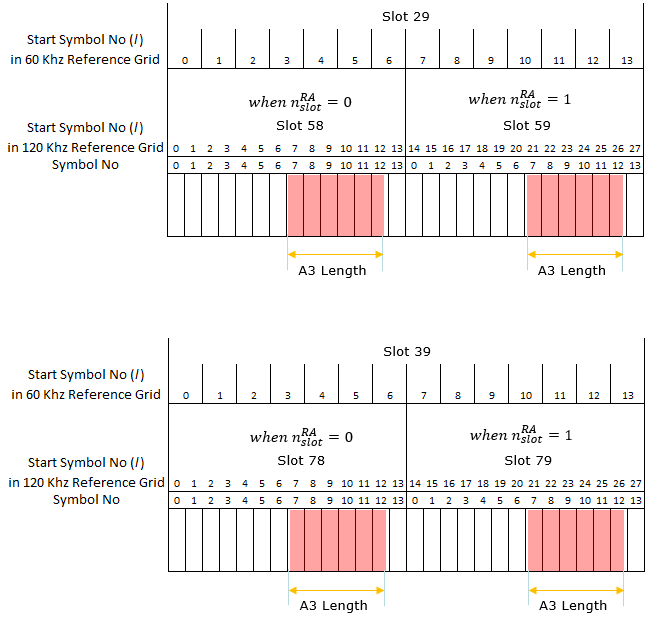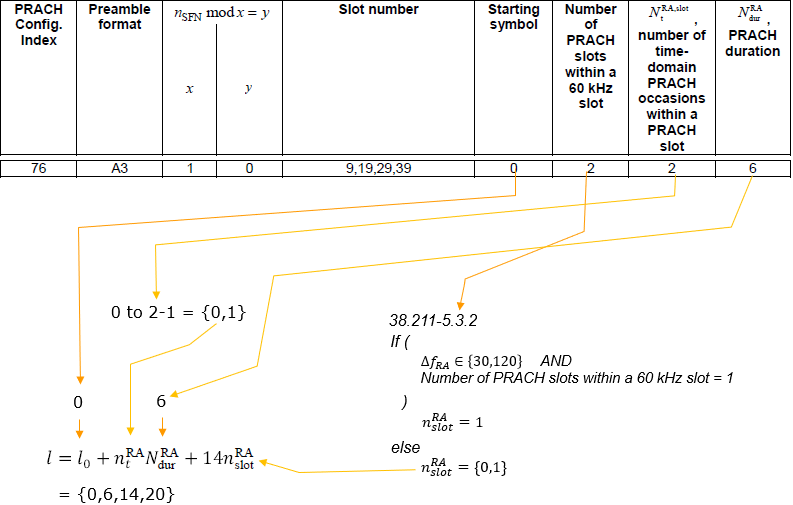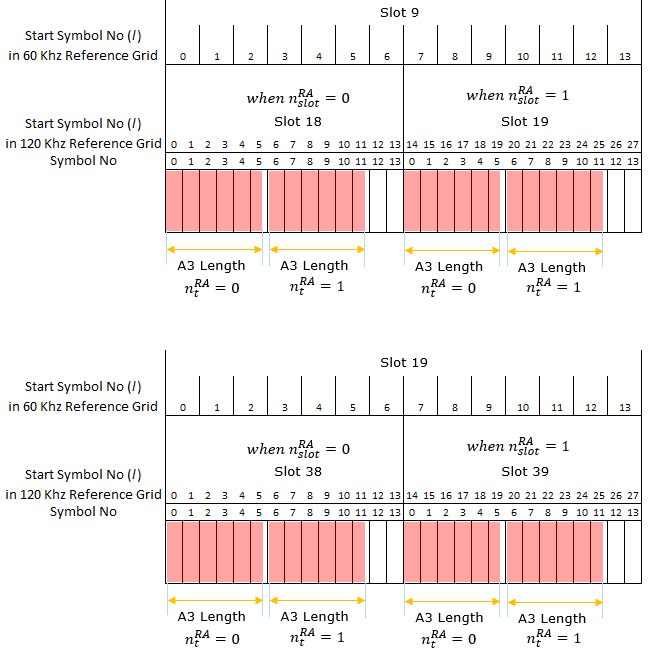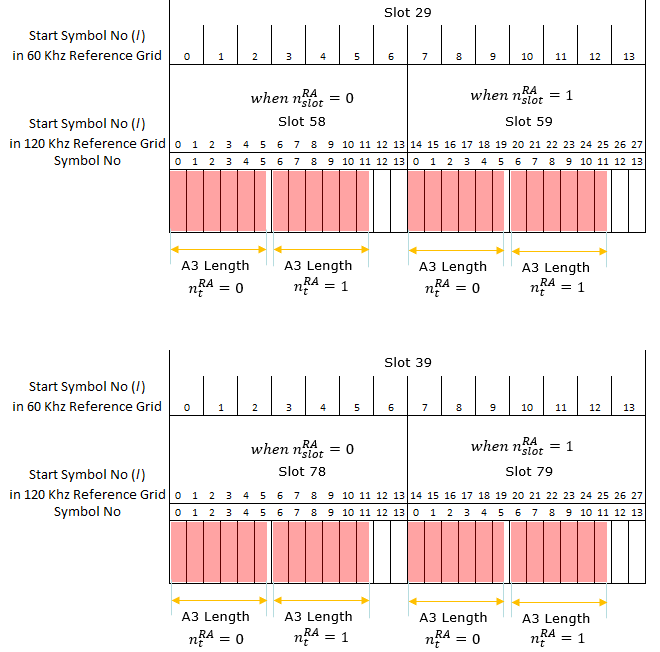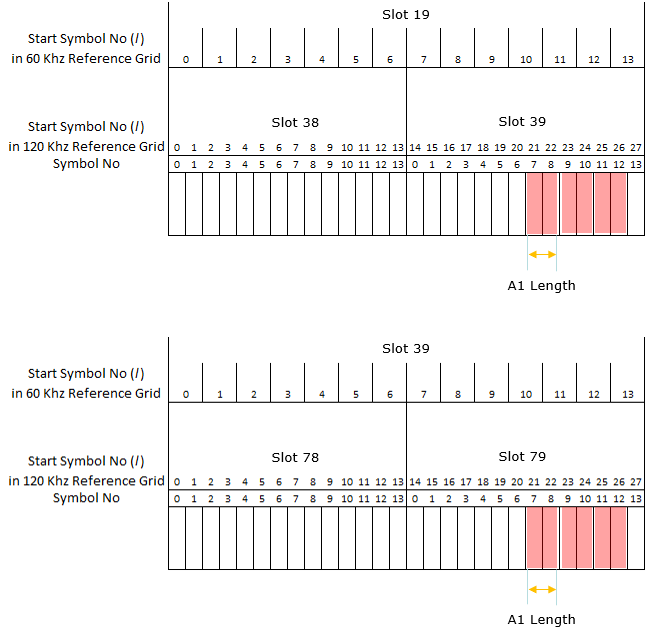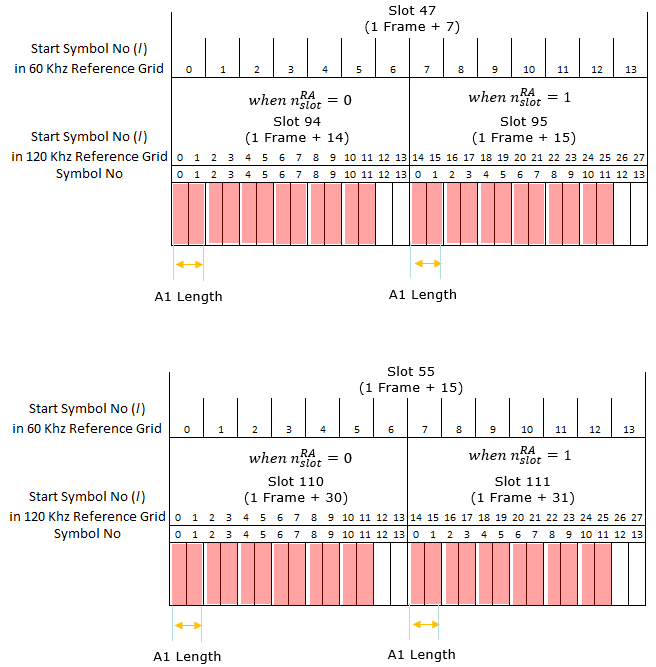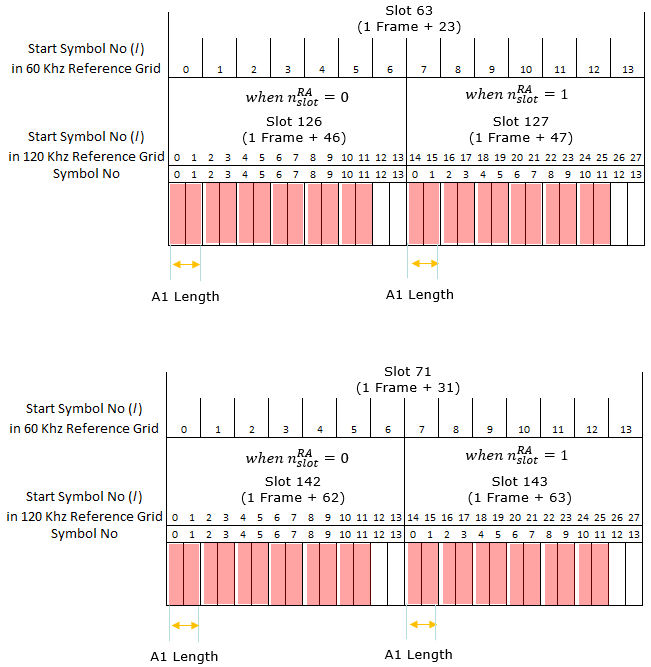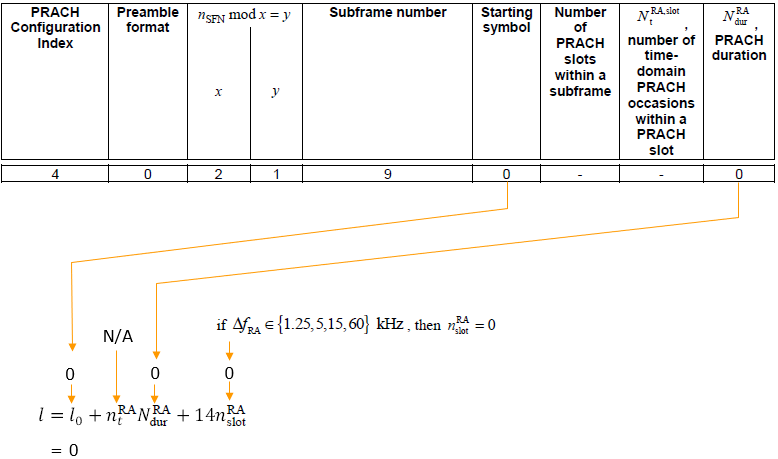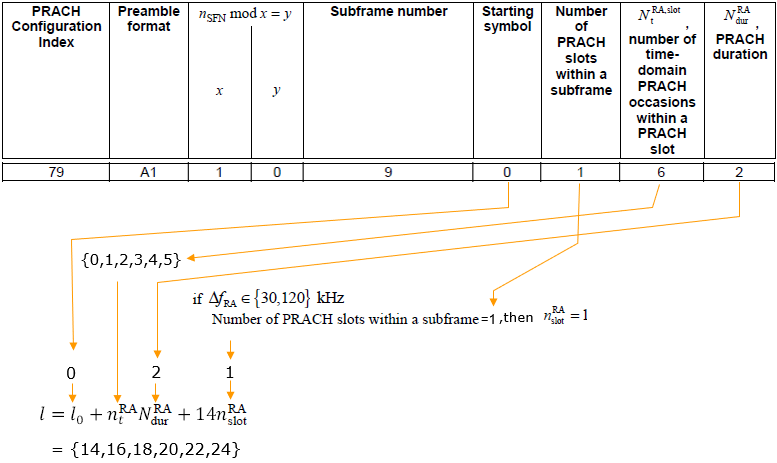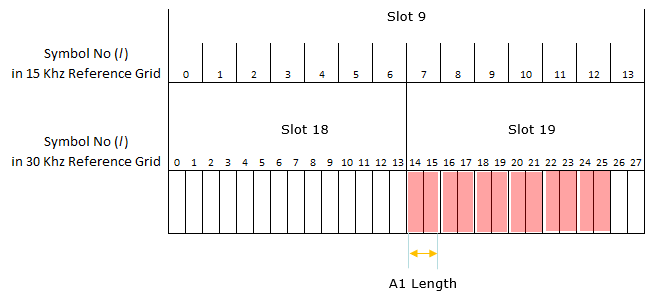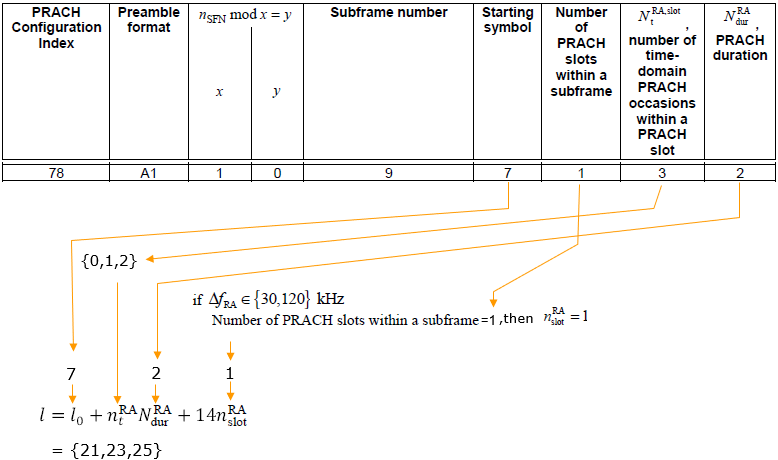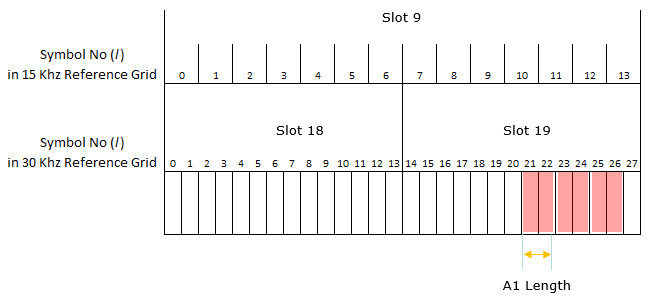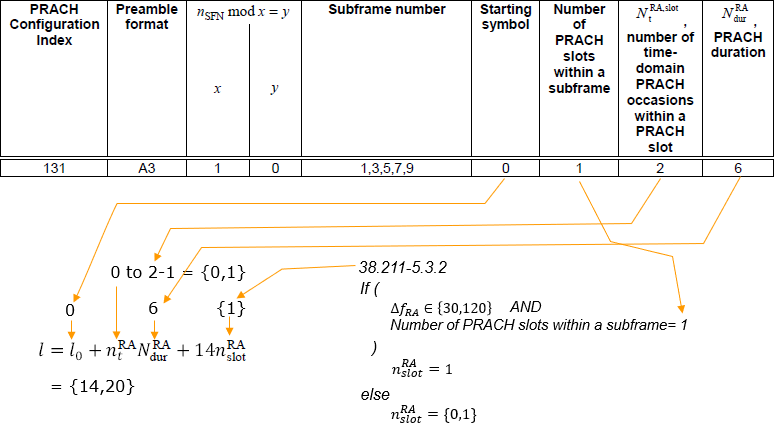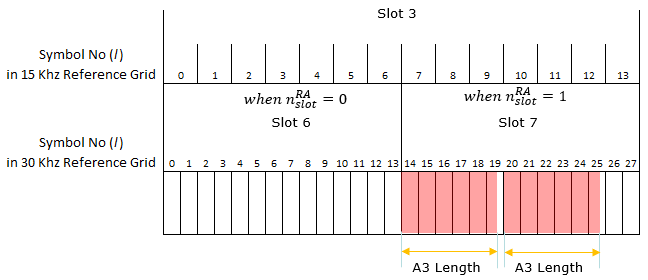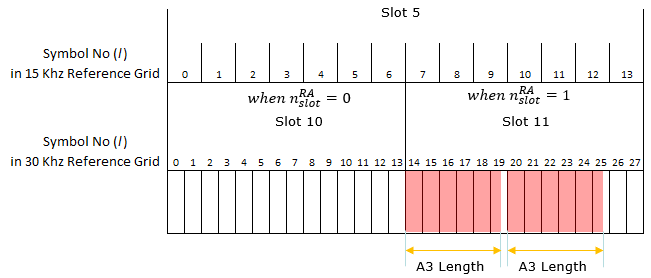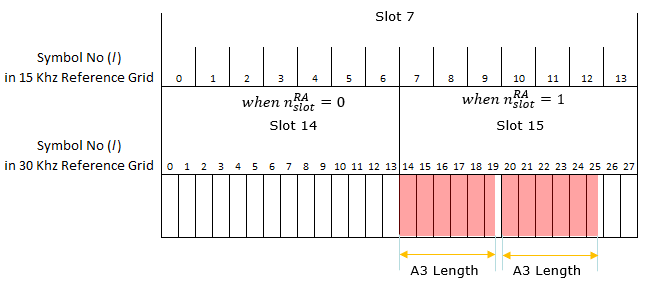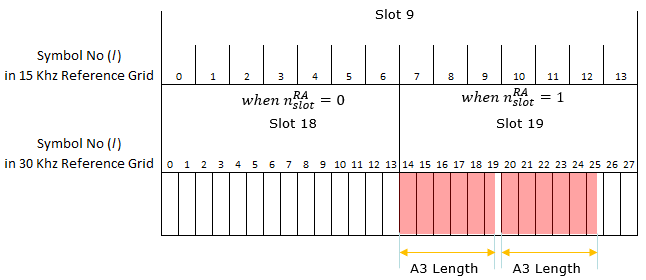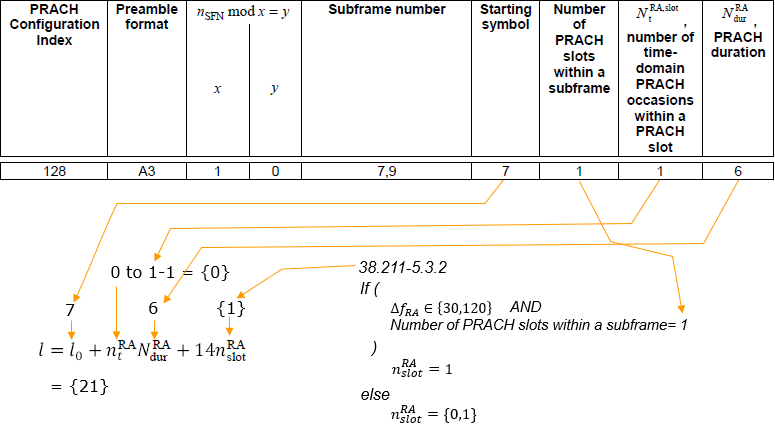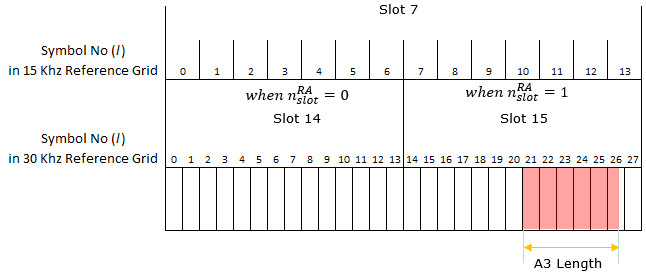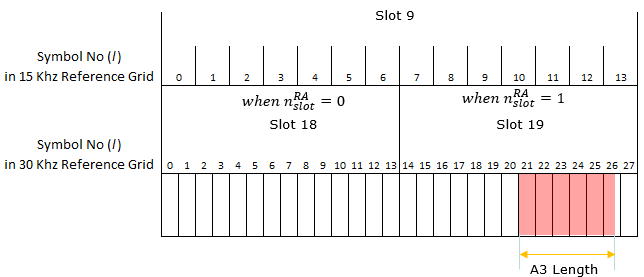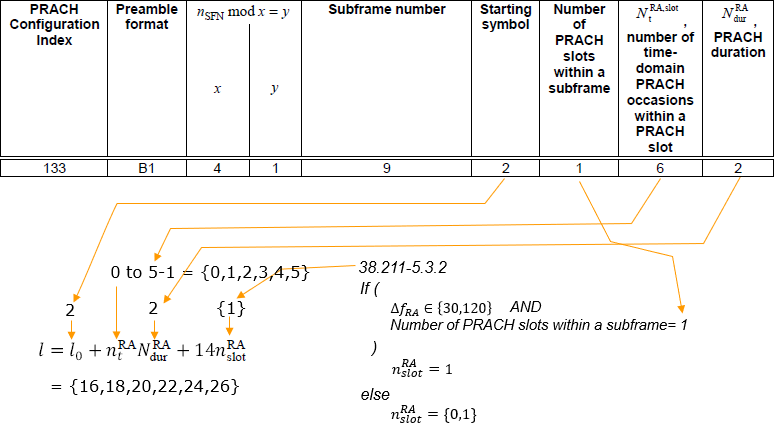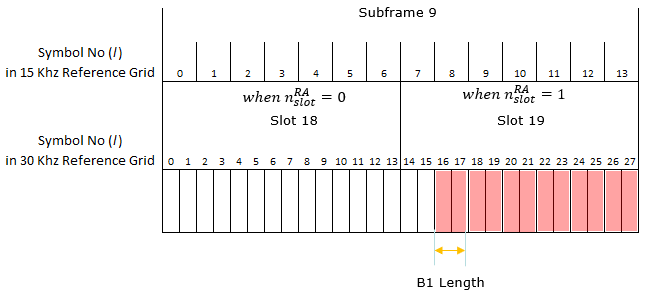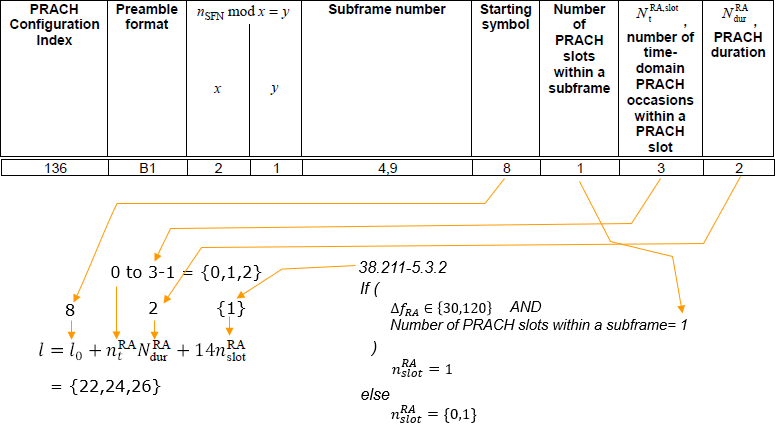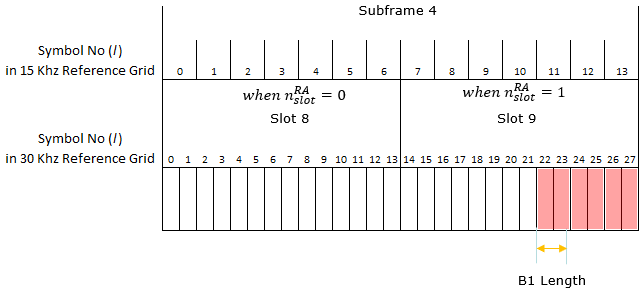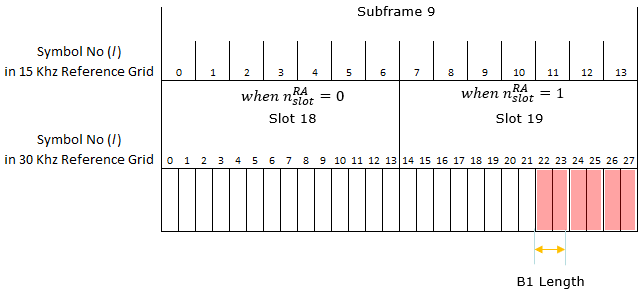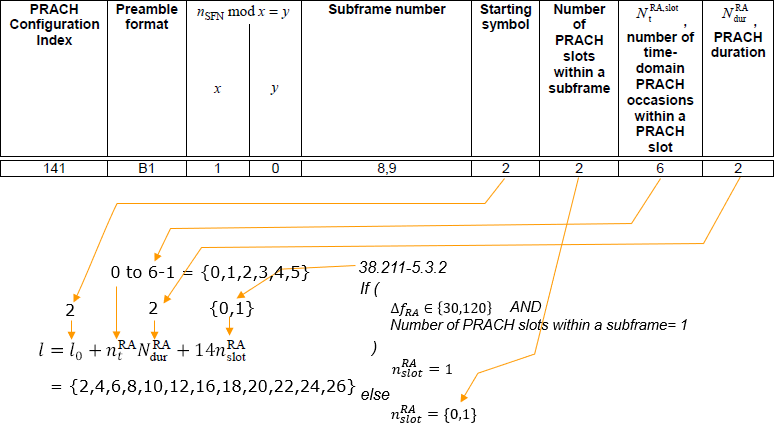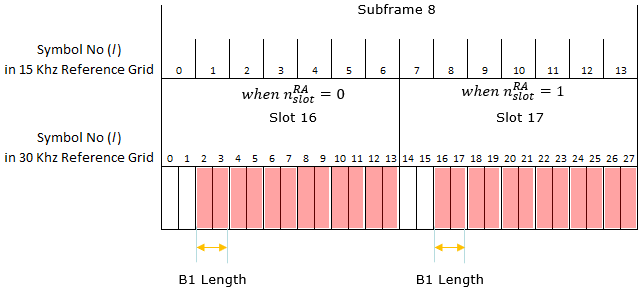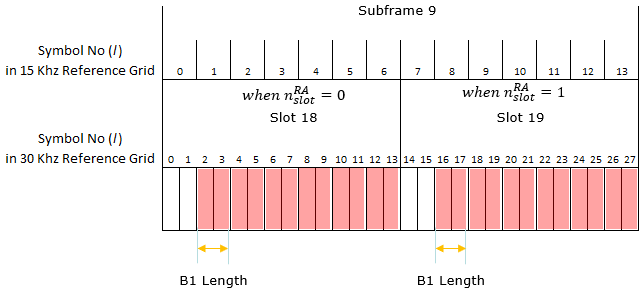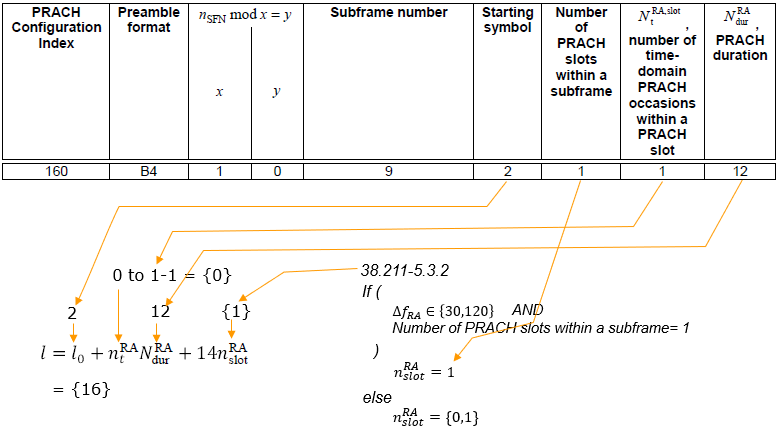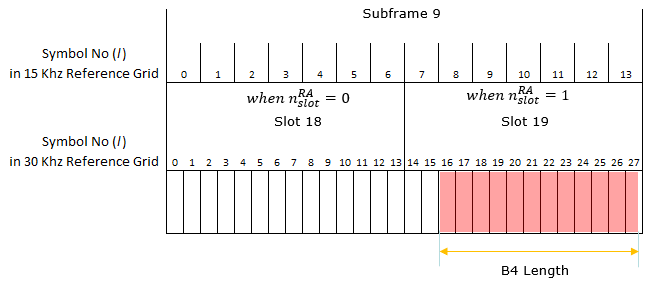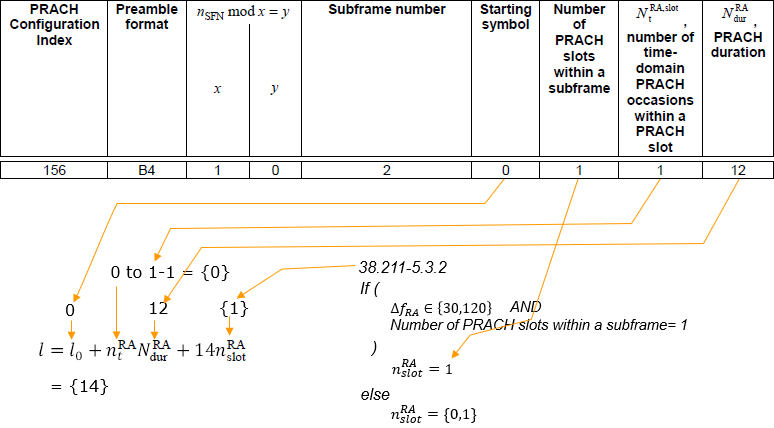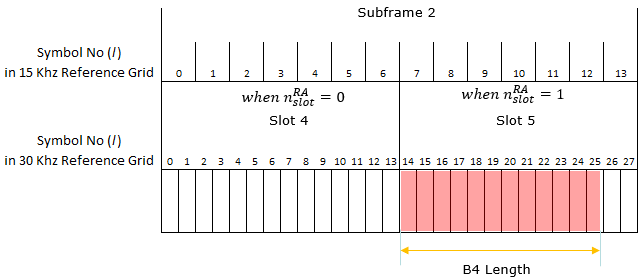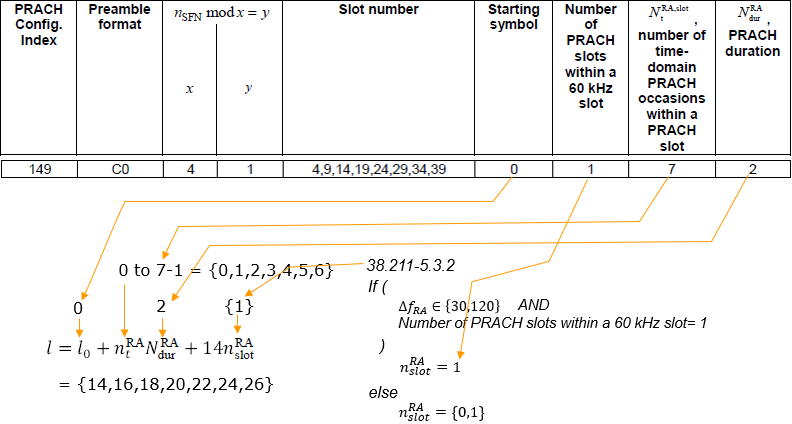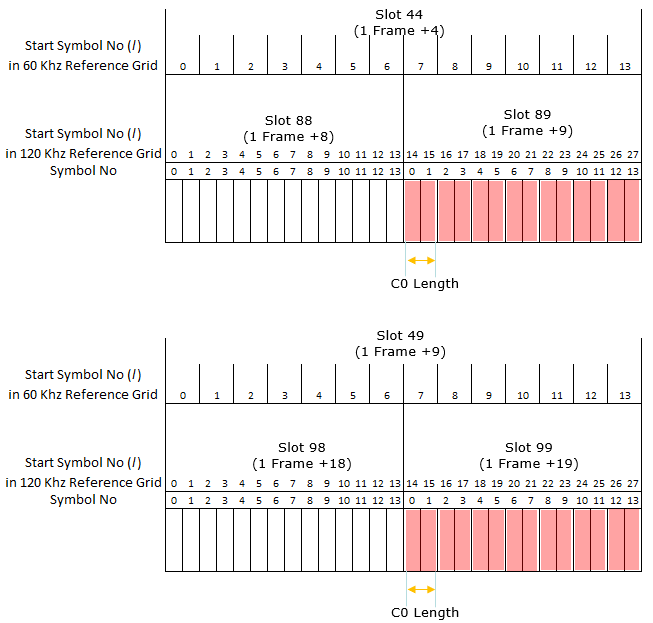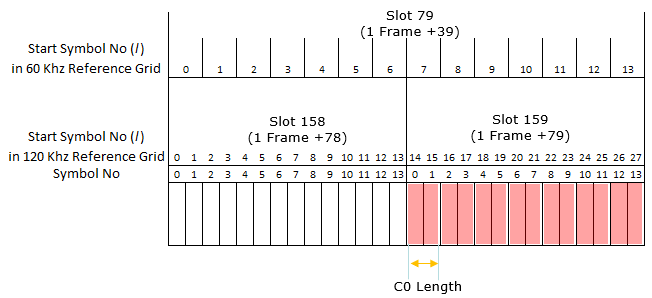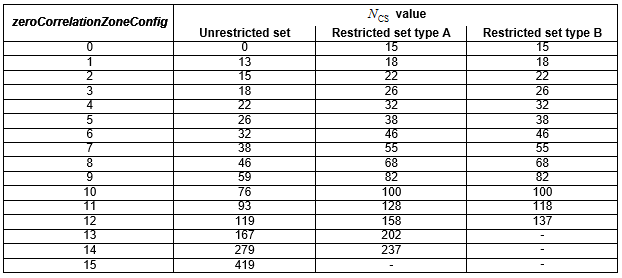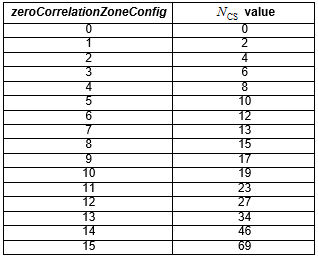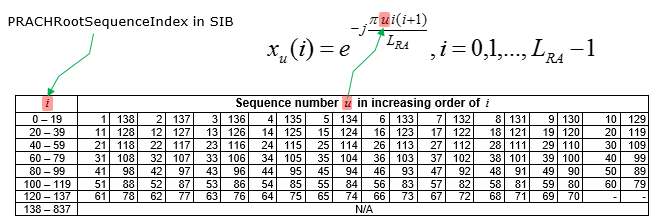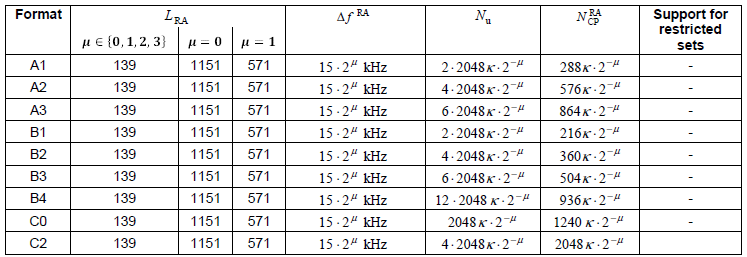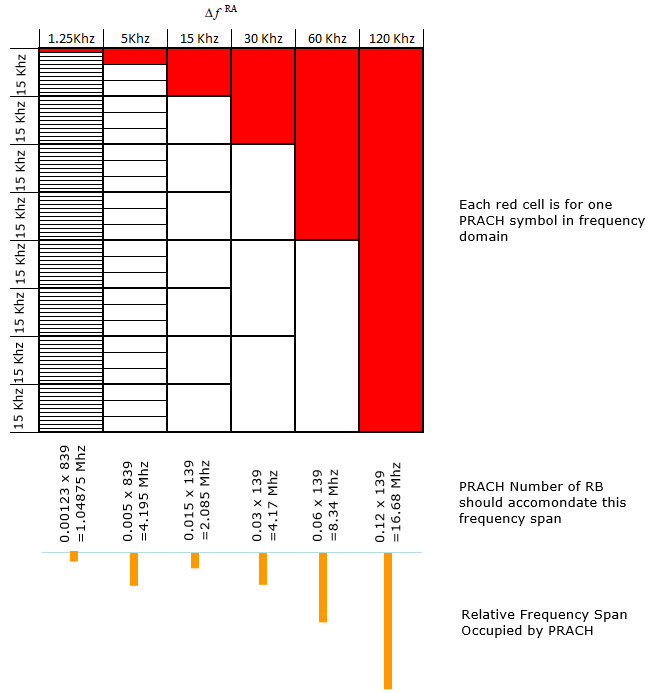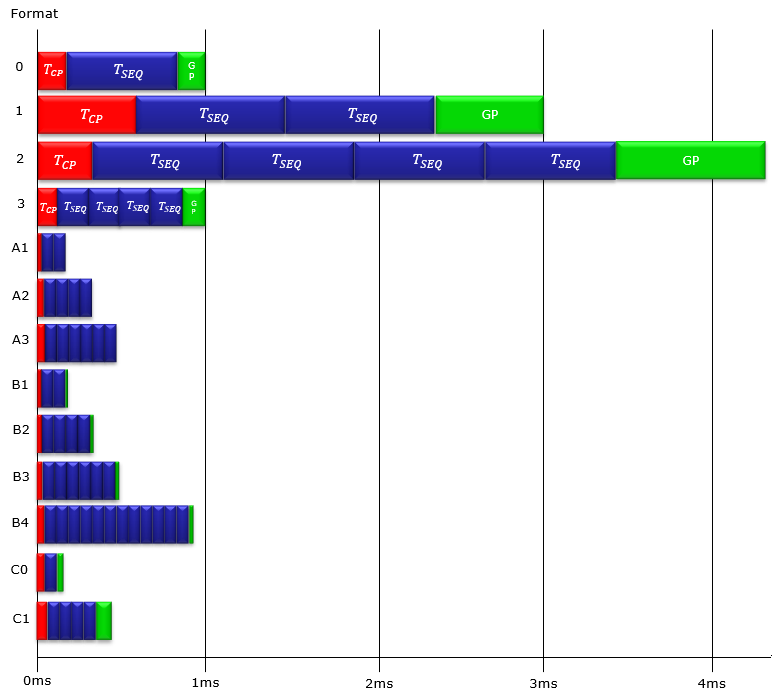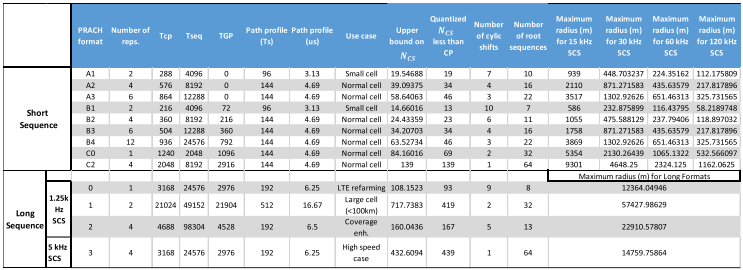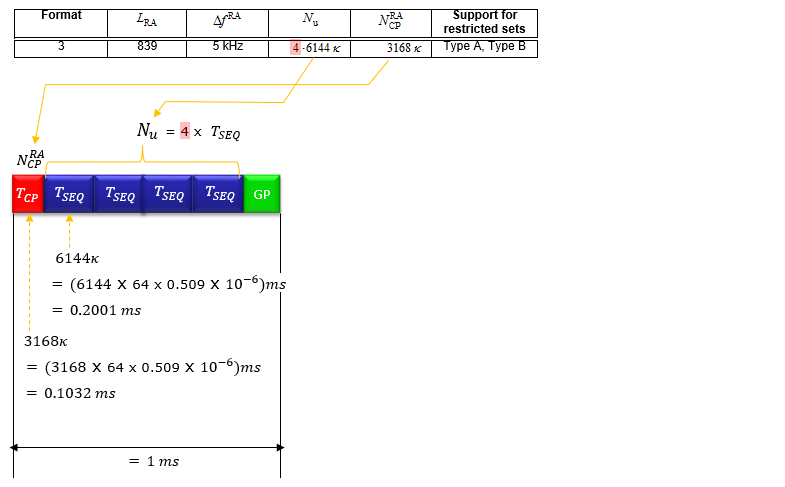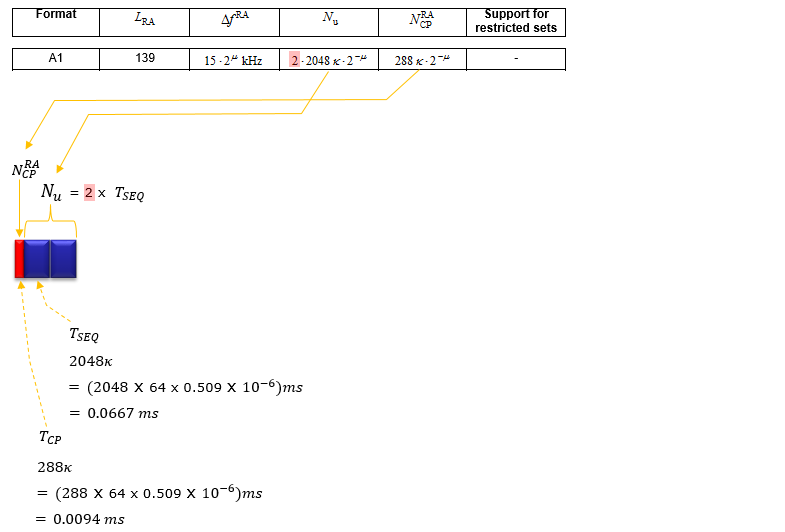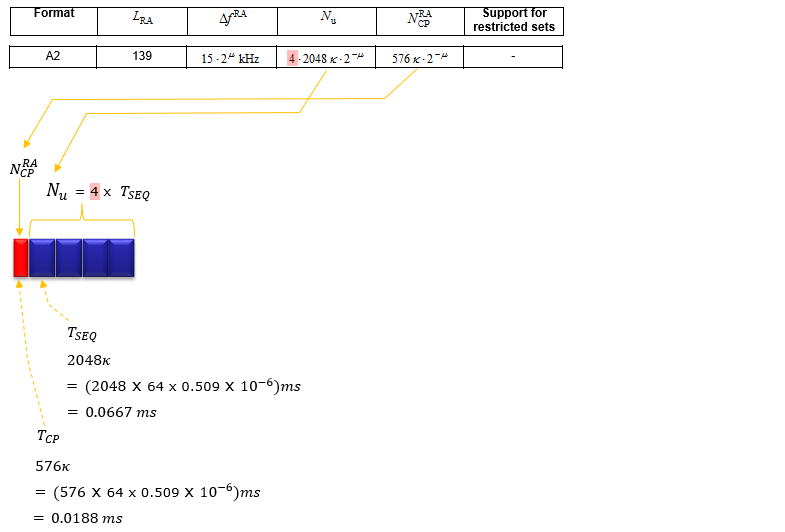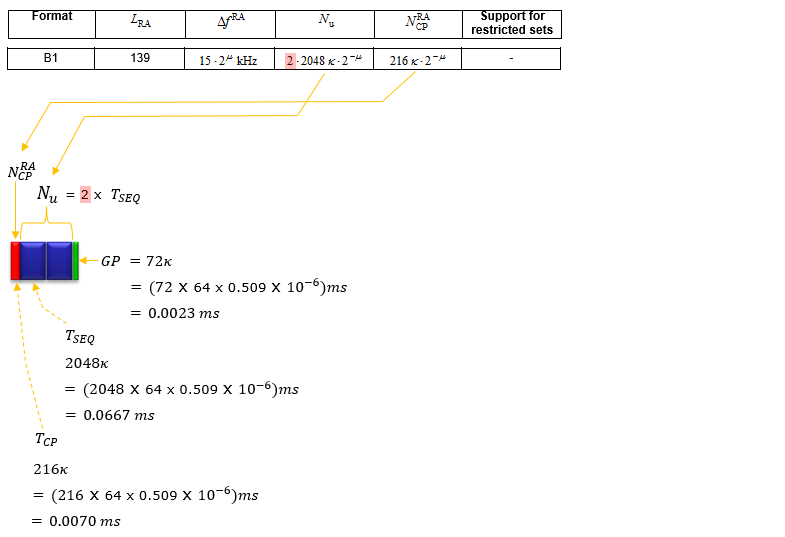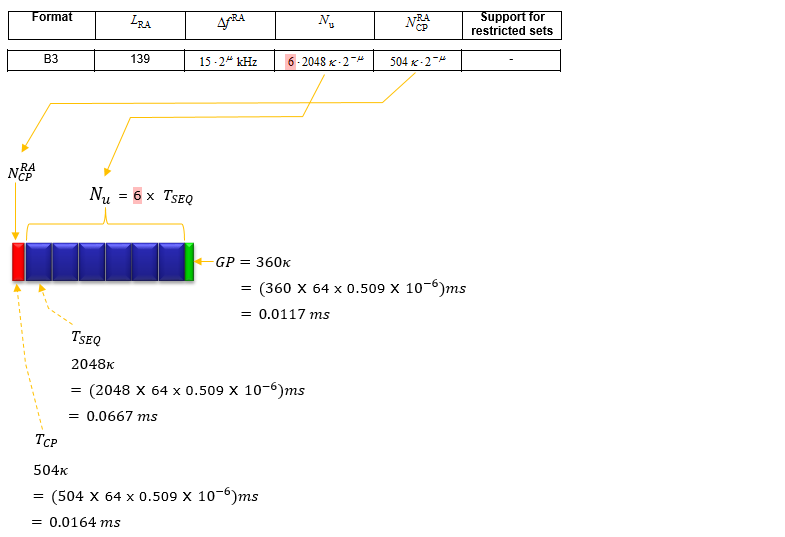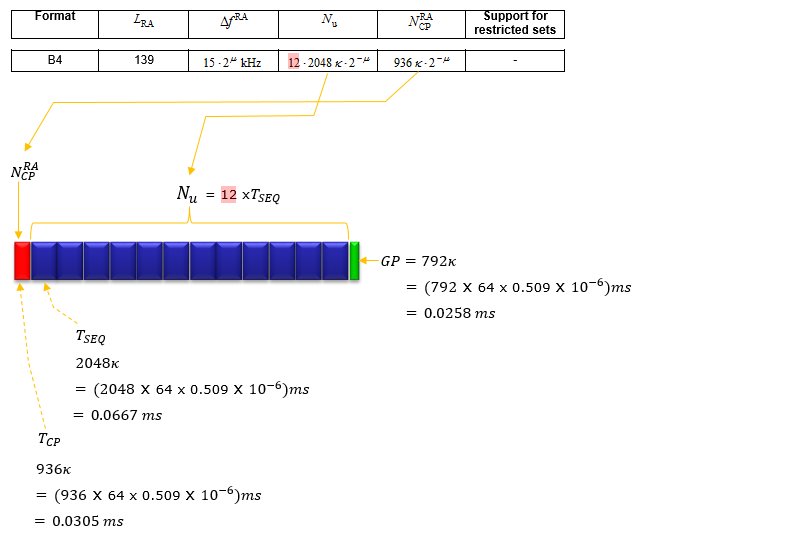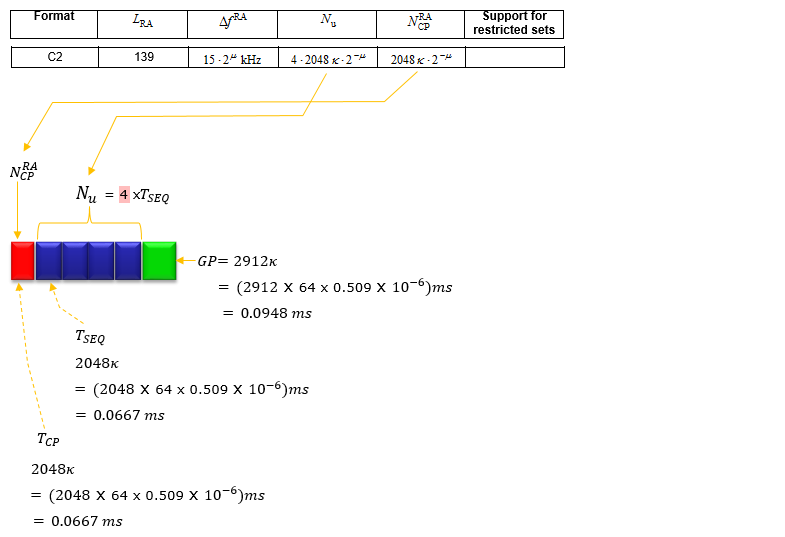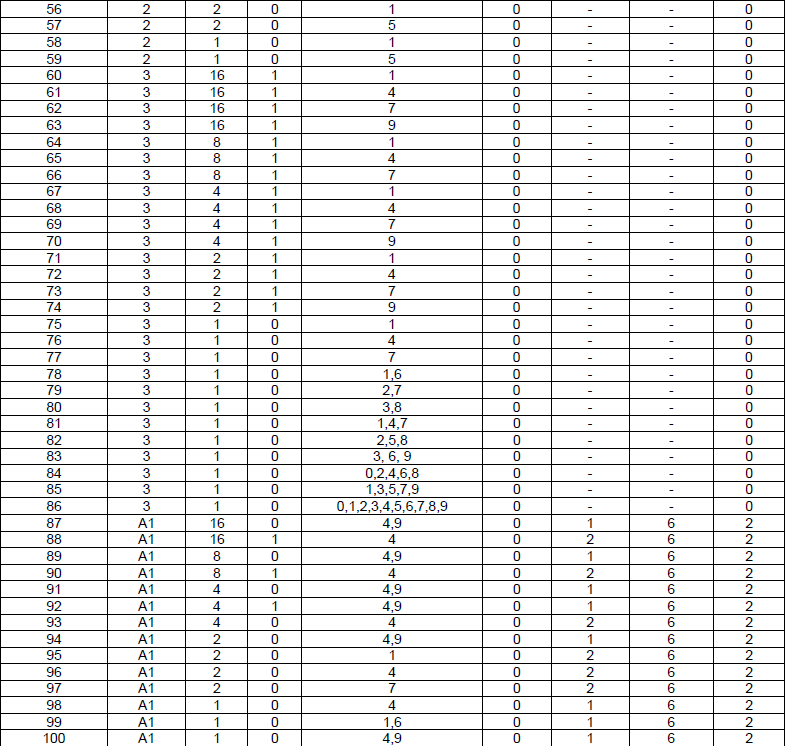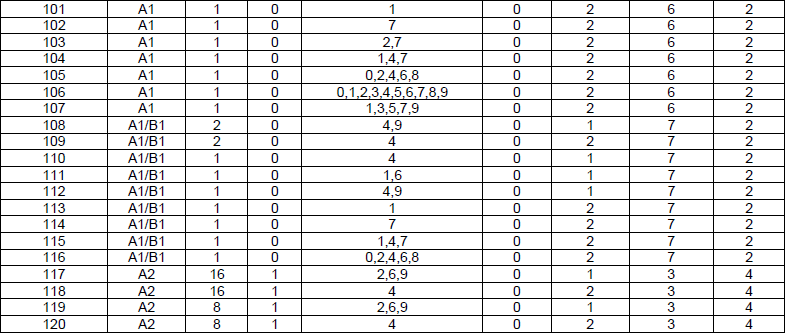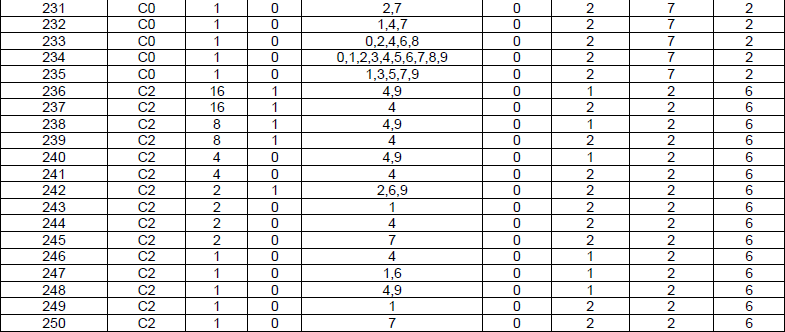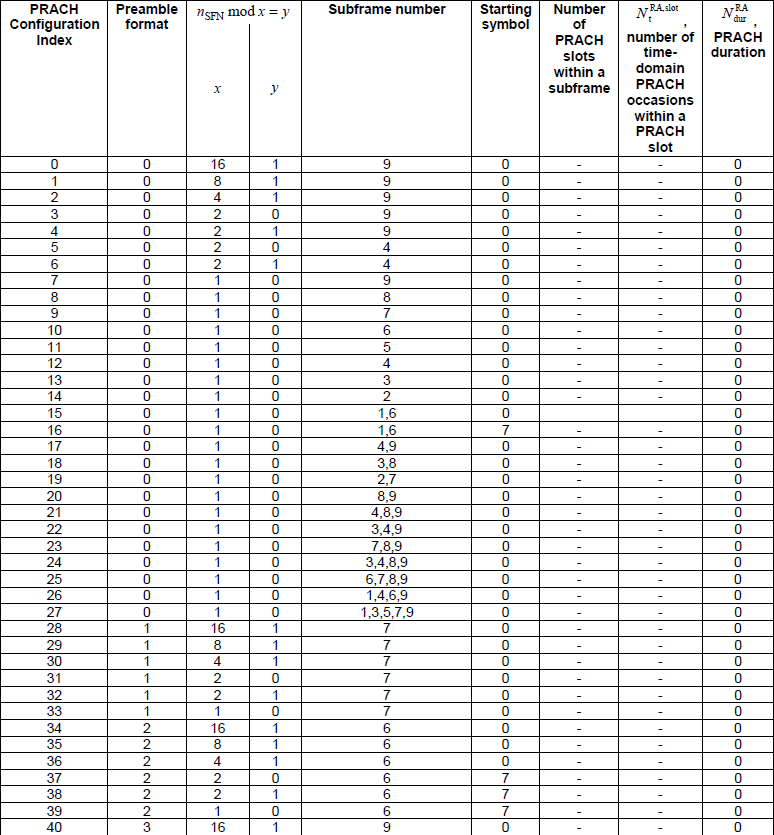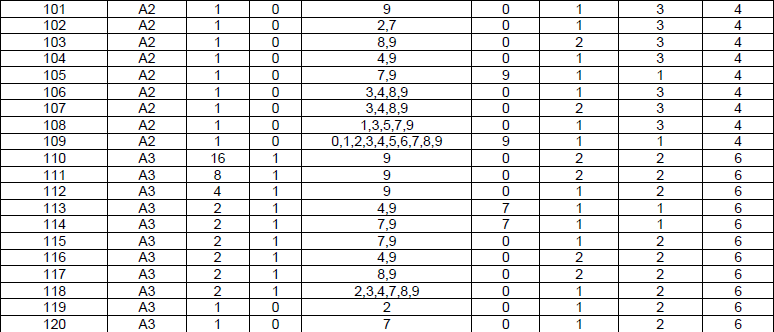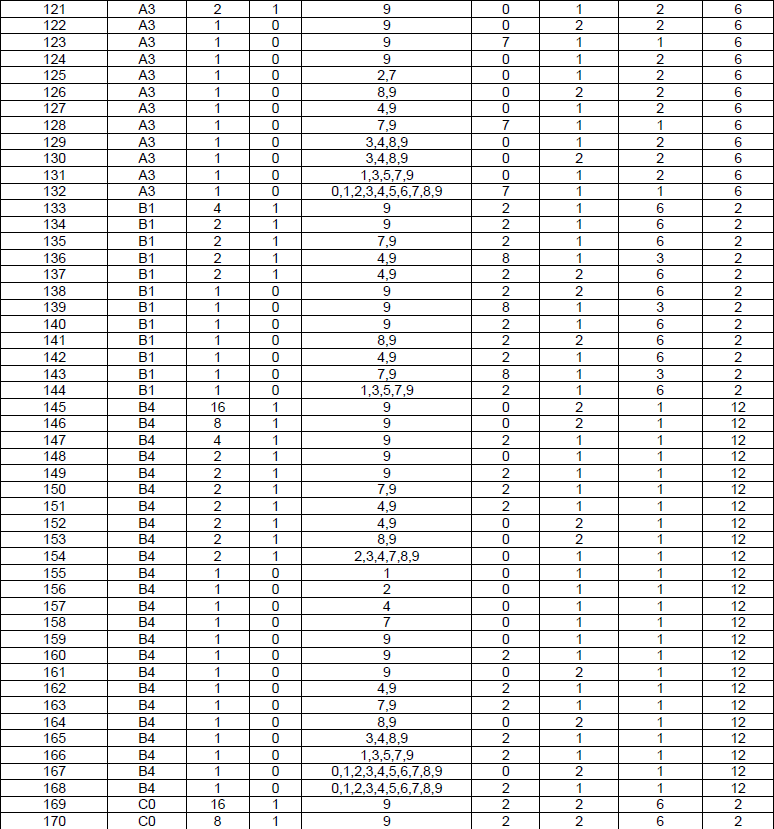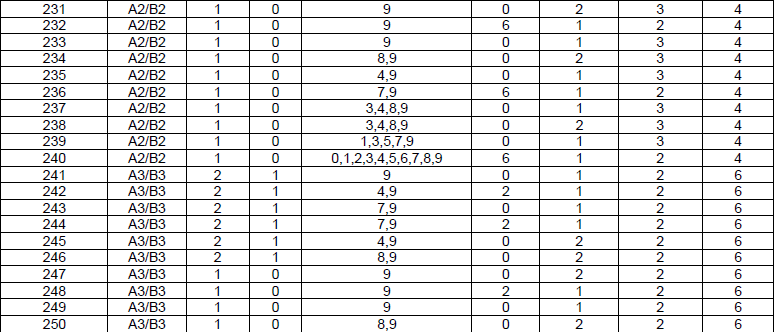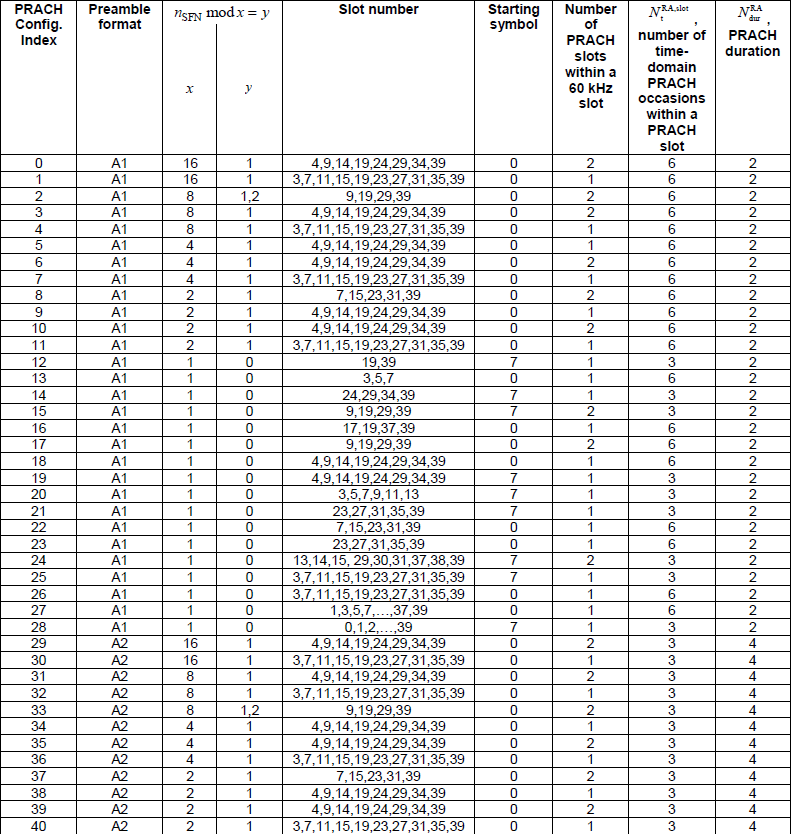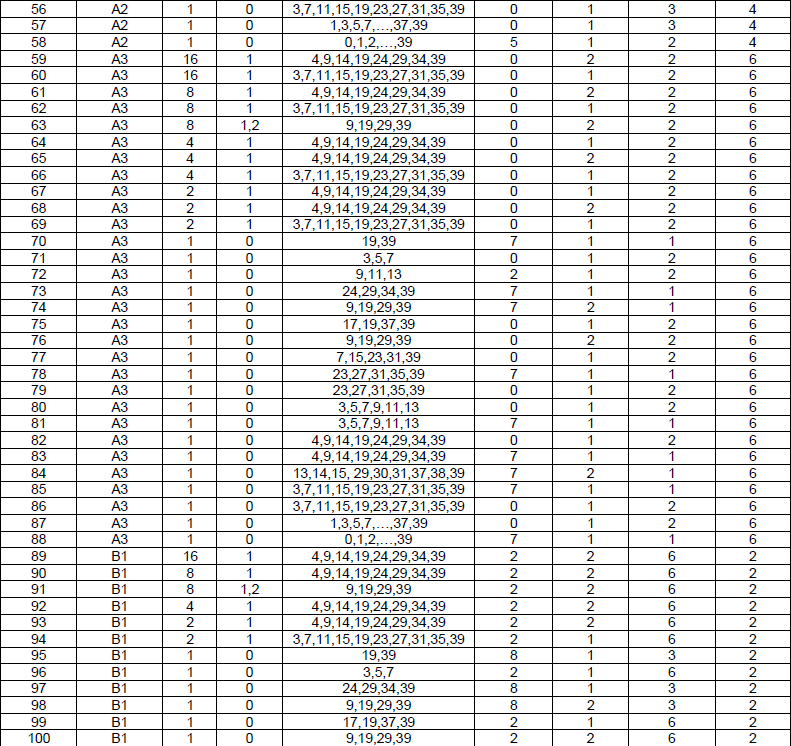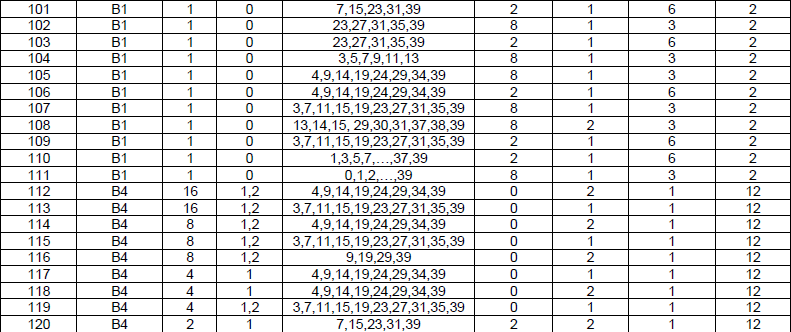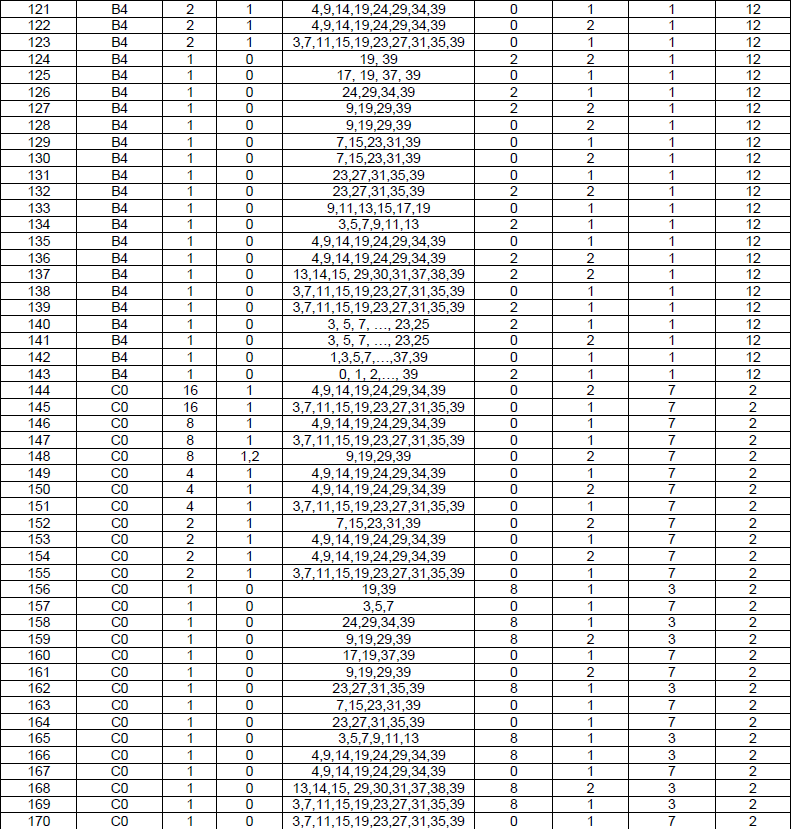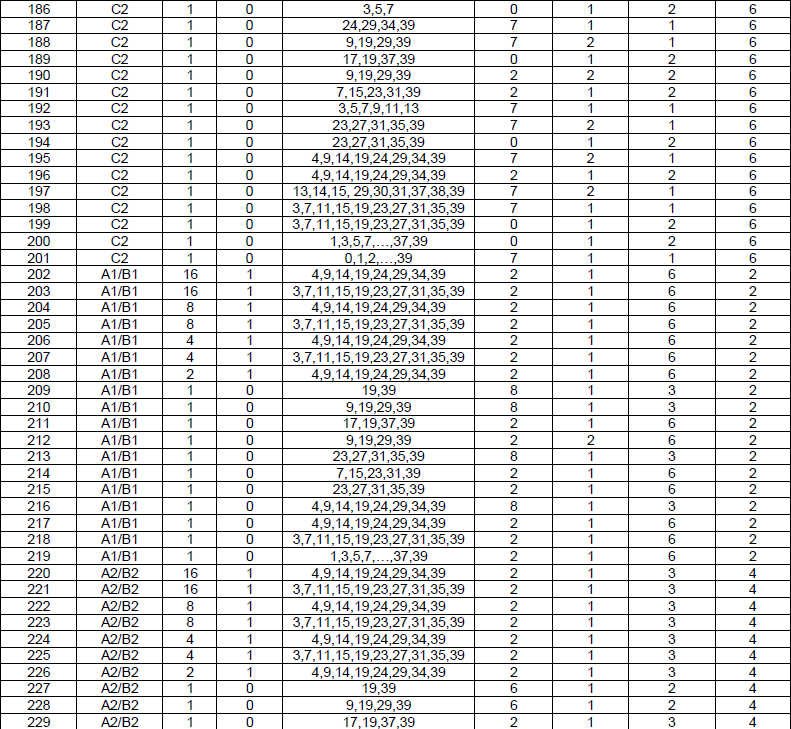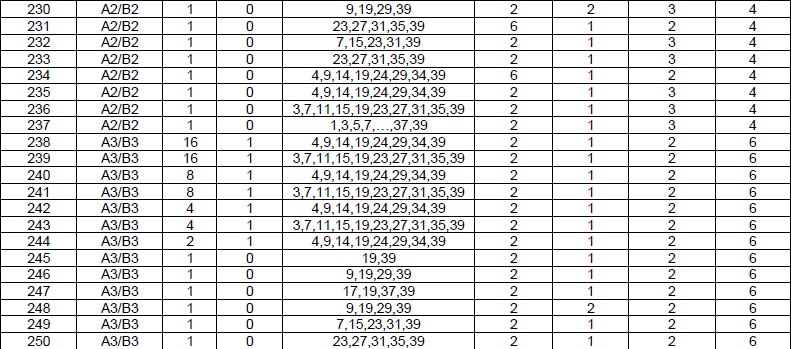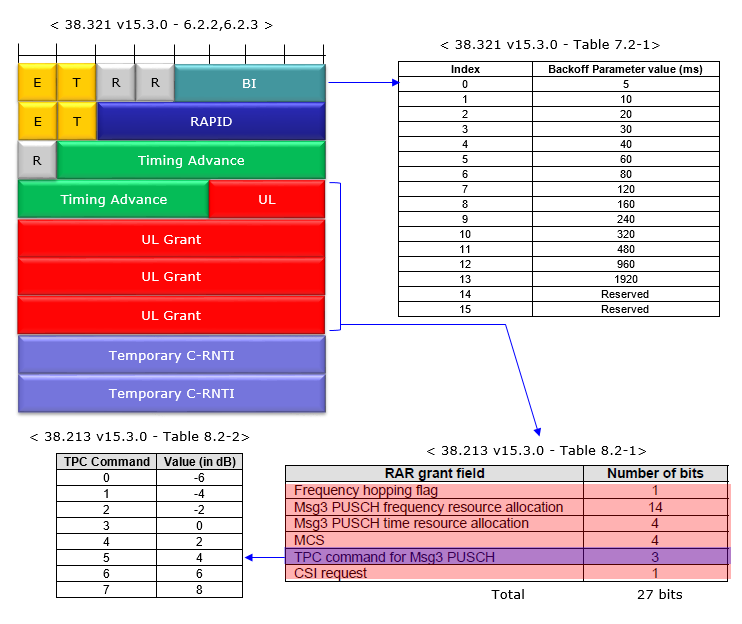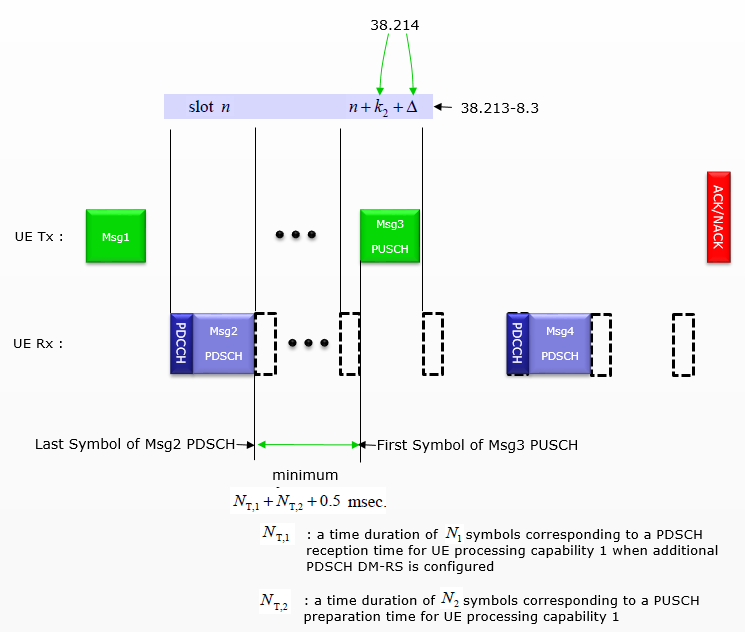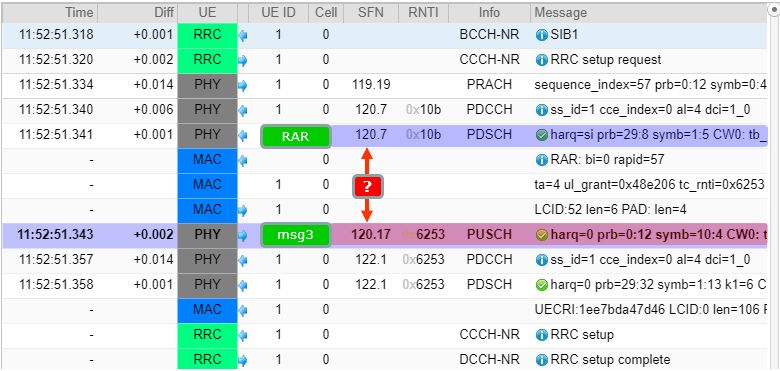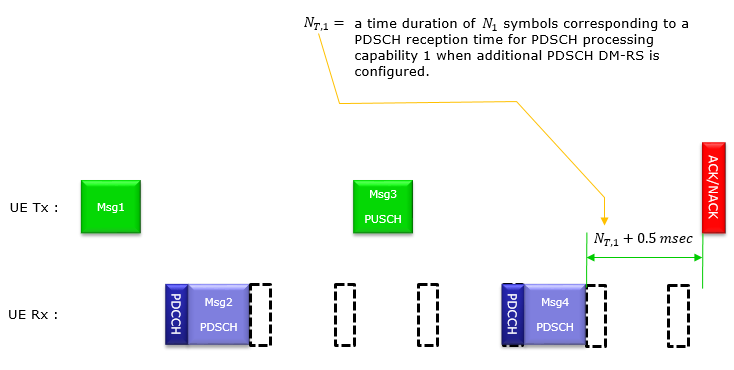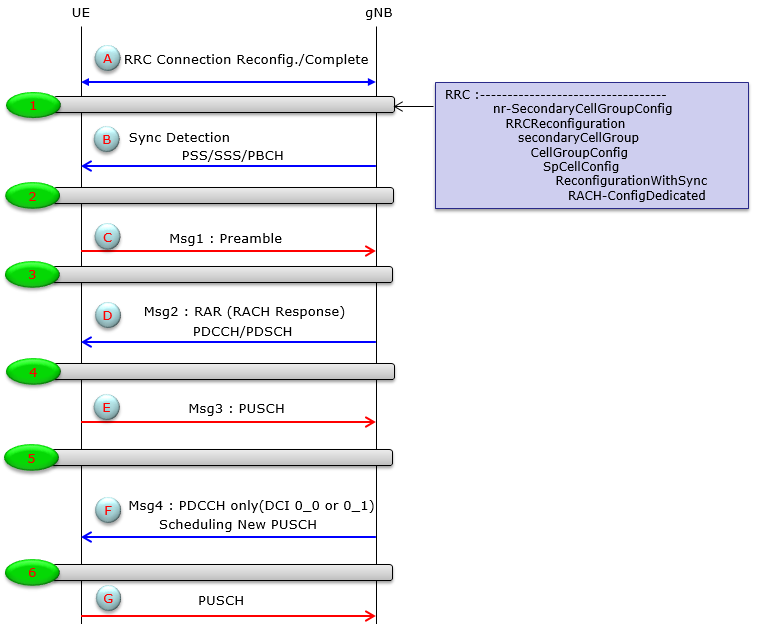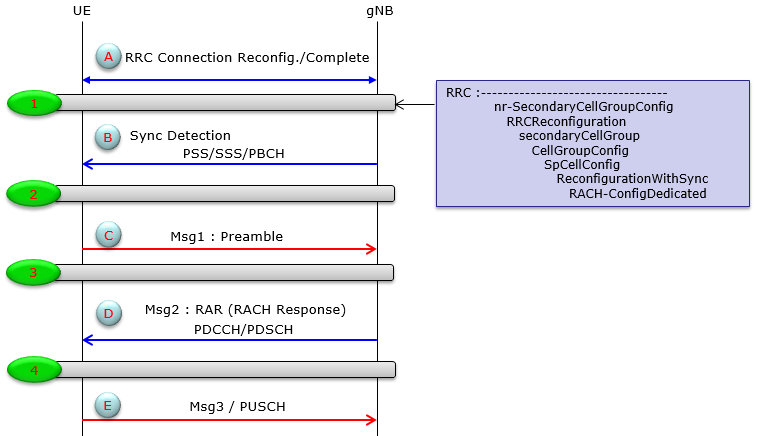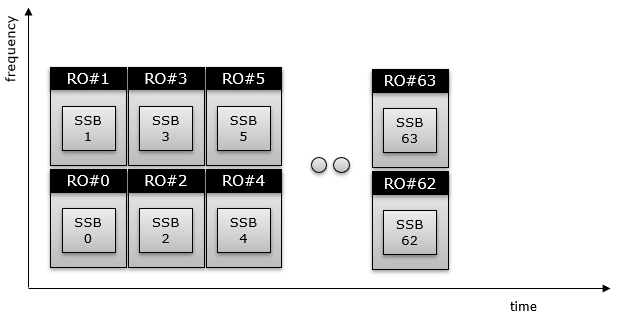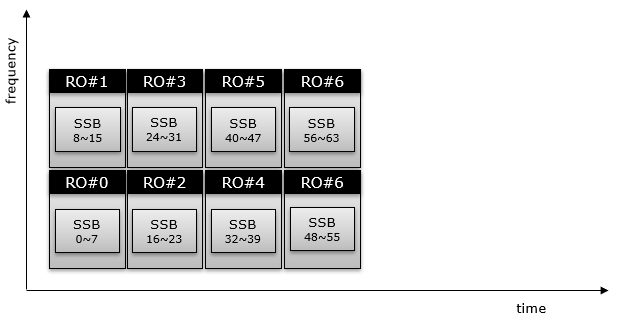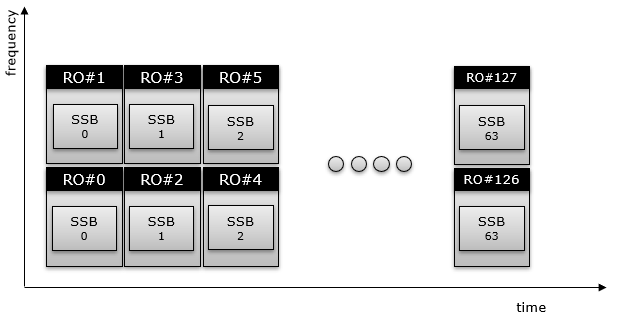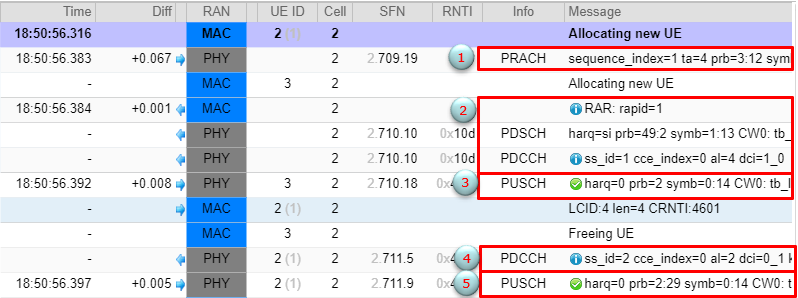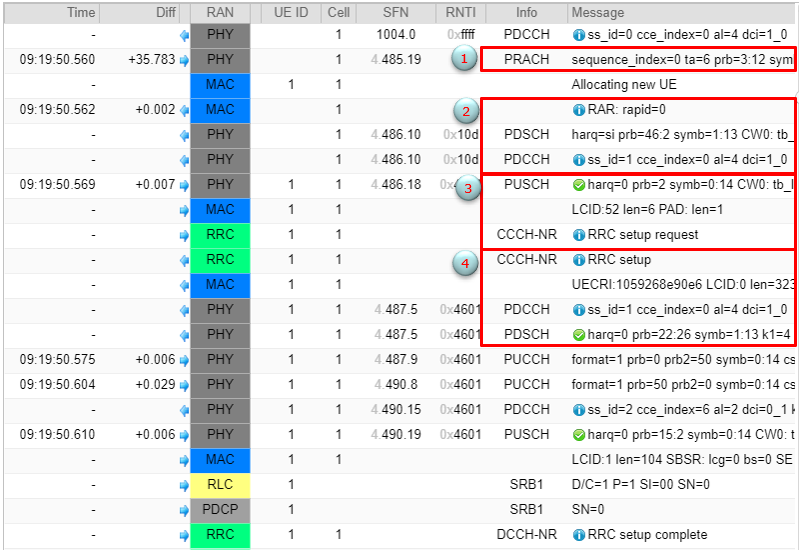|
|
|||||||||||||||||||||||||||||||||||||||||||||||||||||||||||||||||||||||||||||||||||||||||||||||||||||||||||||||
|
5G RACH In a Nutshell
5G RACH in DetailsRACH stands for Random Access Channel. It is an essential part of wireless communication systems, including 5G(NR), 4G (LTE) and even 3G(WCDMA). It plays a significant role in establishing an initial connection(Initial Access) between a device and a network. In layman's terms, you can think of RACH as the first point of contact or the front door to the network. When a device, such as your smartphone or laptop, wants to connect to a network for the first time or after a period of inactivity, it uses the RACH to request access to the network. Initial Access in this context means a sequence of process between UE and gNB(Network) in order for UE to aquire Uplink Synchronization and obtain specified ID for the radio access communication. In more familiar terms, this Initial Access is refered to be 'RACH process'. Depending on the document, the term Initial Access may mean 'Downlink Synchronization + RACH'. But in my case, Initial Access usually refer to RACH process and I wrote a separate page for downlink synchronization. Even though the detailed parameter is not determined (as of Apr 2017), the overal logic of NR RACH will be very similar to LTE RACH process (Based on TR 38.804 v1.0.0 - Ref [32]). So if you are already familiar with LTE RACH process, it would easily pick up NR RACH process. If you are not familiar with LTE RACH process, I would strongly recommend to go through LTE RACH page and try to get familiar with the procedure.
Overall ProcedureThere are several different types of RACH processes and different use cases where each of those different procedures are used. So it would not be easy to describe every types and use case in short. But I think the overall procedure illustrated below can give you a big picture to help you understand almost every cases of RACH procedure. For example, if you are interested in RACH for NSA Setup, [A]+[C]+[D] would be applicable. If you are interested in Contention Based RACH in SAR, [A]+[B]+[C]+[D] would be applicable.
Following is brief description for each step. Full details for each of these steps are pretty compicated and will be explained in other sections of this note. Why RACH ?The first question poping up in your mind when you first hear about the word RACH or RACH Process would be 'Why RACH ?', 'What is the functionality/purpose of RACH process ?', "Why we need this kind of complicated (looks over-complicated) ?'. For sure, it is not for confusing you :), RACH has very important functionality especially in LTE (and in WCDMA as well). The main purpose of RACH can be described as follows. i) Achieve UP link synchronization between UE and eNB ii) Obtain the resource for Message 3 (e.g, RRC Connection Request) In most of the communication (especially digital comunication regardless of whether it is wired or wireless), the most important precondition is to establish the timing synchronization between the reciever and transmitter. So whatever communication technology you would study, you would see some kind of synchronization mechanism that is specially designed for the specific communication. In NR (in LTE and WCDMA as well), the synchronization in downlink (Transmitter = gNB, Reciever = UE), this synchronization is achieved by the special synchronization channel (special physical signal pattern). Refer to Synchronization page for the details. This downlink sync signal gets broadcasted to everybody and it is get transmitted all the time with a certain interval. However in Uplink(Transmitter = UE, Reciever = gNB), it is not efficient (actually waste of energy and causing a lot of interference to other UEs) if UE is using this kind of broadcasting/always-on synchronization mechanism. You may easily understand this kind of problem. In case of uplink, this synchronization process should meet following criteria i) The synchronization process should happen only when there is immediate necessity ii) The synchronization should be dedicated to only a specific UE All the complicated/confusing stories in this page is mostly about the process specially designed mechanism to meet these criteria. Another purpose of RACH process is to obtain the resource for Msg3 (Message 3). RRC Connection Request is one example of Msg3 and there are several different types of Msg3 depending on situation. You would figure out this part in reading through this page and this is not very complicated to understand. When we need RACH ?There are many situation that triggers RACH process. The list of cases are summarized in 38.300-9.2.6 as follows. The first half of the list(i~iv) is same as in LTE case. The second half of the list would be NR specific. We don't have RRC_INACTIVE state (item v), On-Demand SIB transmition(item vii) in LTE, we have a primitive types of BeamFormaing / BeamManagement in LTE but not as sophisticated as in NR(item viii). We do have CA(SCell addition) in LTE but we don't trigger RACH in any of CA activity in LTE(item vi). i) Initial access from RRC_IDLE; ii) RRC Connection Re-establishment procedure; iii) Handover; iv) DL or UL data arrival during RRC_CONNECTED when UL synchronisation status is "non-synchronised"; v) Transition from RRC_INACTIVE; vi) To establish time alignment at SCell addition; vii) Request for Other SI viii) Beam failure recovery. Two types of RACH Procedure : Contention Based and NonContention BasedThere are largely two types of RACH procedure in terms of allowable physical resources of PRACH (i.e, time and frequency location of PRACH) and sequence index of the PRACH. This is also almost same as in LTE. Contention based RACH ProcedureWhen a UE transmit a PRACH Preamble, it transmits with a specific pattern and this specific pattern is called a "Signature". In each LTE cell, total 64 preamble signatures are available and UE select randomly one of these signatures. UE select "Randomly" one of these signatures ? Does this mean that there is some possibility that multiple UEs send PRACH with identical signatures ? Yes. There is such a possibility. It means the same PRACH preamble from multipe UE reaches the NW at the same time.. this kind of PRACH collision is called "Contention" and the RACH process that allows this type of "Contention" is called "Contention based" RACH Process. In this kind of contention based RACH process, Network would go through additional process at later step to resolve these contention and this process is called "Contention Resolution" step. Typical 'Contention Based' RACH Procedure is as follows : (Typically 4 steps) i) UE --> NW : RACH Preamble (RA-RNTI, indication for L2/L3 message size) ii) UE <-- NW : Random Access Response (Timing Advance, T_C-RNTI, UL grant for L2/L3 message) iii) UE --> NW : L2/L3 message iv) Message for early contention resolution Now let's assume that a contention happened at step i). For example, two UEs sent PRACH. In this case, both of the UE will recieve the same T_C-RNTI and resource allocation at step ii). And as a result, both UE would send L2/L3 message through the same resource allocation(meaning with the same time/frequency location) to NW at step iii). What would happen when both UE transmit the exact same information on the exact same time/frequency location ? One possibility is that these two signal act as interference to each other and NW decode neither of them. In this case, none of the UE would have any response (HARQ ACK) from NW and they all think that RACH process has failed and go back to step i). The other possibility would be that NW could successfully decode the message from only one UE and failed to decode it from the other UE. In this case, the UE with the successful L2/L3 decoding on NW side will get the HARQ ACK from Network. This HARQ ACK process for step iii) message is called "contention resolution" process. This process can be summarized as below
Non-Contention Based (Contention Free) RACH ProcedureBut there is some cases that these kind of contention is not acceptable due to some reason (e.g, timing restriction) and these contention can be prevented. Usually in this case, the Network informs each of the UE of exactly when and which preamble signature it has to use. Of course, in this case Network will allocate these preamble signature so that it would not collide. This kind of RACH process is called "Contention Free" or "Non-Contention based RACH" procedure. To initiate the "Contention Free" RACH process, UE should be in Connected Mode before the RACH process as in Handover case. Typical 'Contention Free' RACH Procedure is as follows : (Typically 2 steps) i) UE <--NW : RACH Preamble (PRACH) Assignment (This is done by RRC Configuration, not exactly part of RACH Proc) ii) UE --> NW : RACH Preamble (RA-RNTI, indication for L2/L3 message size) iii) UE <--NW : Random Access Response (Timing Advance, C-RNTI, UL grant for L2/L3 message) This process can be summarized as below
Fundamental Difference from LTE RACHAs I mentioned above, the overall protocol sequence would be almost same in LTE and NR, but there are a few differences between the two as summarized below.
Preamble Sequence GenerationLike LTE Preamble Sequence, NR Preamble sequence is also based on Zadoff Chu based sequence. Overall sequence generation is as follows. The resason why we use Zadoff Chu is same as in LTE. It is due to various favorable properties, including constant amplitude before and after DFT operation, zero cyclic auto-correlation and low crosscorrelation (as mentioned in III-B of this paper).
The detailed base sequence generation algorithm can be summarized as follows. Even though the details are different, basically this is similar to LTE as well. There are two types of sequence in terms of sequence length(L_RA = 139 and 839). < Frequency Domain Sequence Generation >Following is the equation to generate PRACH sequence in frequency domain based on 36.211-6.3.3.1.
<Time Domain Sequence Generation >Following is the equation to generate the time domain sequence for PRACH. Basically the big picture is to do IFFT to the frequency domain data generated above. As you notice here, this is very complicated and confusing equation. You would not need to understand every part. I just put down this equation with a lot of messy arrow just to highlight some of the important parameters. There are many small parameters that are not described here. For those details, refer to 38.211-5.3.2
< Examples >
< 38.211 v15.5-Table 6.3.3.2-4: Random access configurations for FR2 and unpaired spectrum. >
With the calculated RACH transmission symbol and Preamble format 3 structure, RACH occasion in time domain can be illustrated as follows.
< 38.211 v15.5-Table 6.3.3.2-4: Random access configurations for FR2 and unpaired spectrum. >
With the calculated RACH transmission symbol and Preamble format 3 structure, RACH occasion in time domain can be illustrated as follows.
< 38.211 v15.5-Table 6.3.3.2-4: Random access configurations for FR2 and unpaired spectrum. >
With the calculated RACH transmission symbol and Preamble format 3 structure, RACH occasion in time domain can be illustrated as follows.
< 38.211 v15.5- Table 6.3.3.2-4: Random access configurations for FR2 and unpaired spectrum. >
With the calculated RACH transmission symbol and Preamble format 3 structure, RACH occasion in time domain can be illustrated as follows.
< 38.211 v15.5- Table 6.3.3.2-4: Random access configurations for FR2 and unpaired spectrum. >
With the calculated RACH transmission symbol and Preamble format 3 structure, RACH occasion in time domain can be illustrated as follows.
< 38.211 v15.5-Table 6.3.3.2-4: Random access configurations for FR2 and unpaired spectrum. >
With the calculated RACH transmission symbol and Preamble format 3 structure, RACH occasion in time domain can be illustrated as follows.
< 38.211 v15.3.0-Table 6.3.3.2-3: Random access configurations for FR1 and unpaired spectrum >
< 38.211 v15.3.0-Table 6.3.3.2-3: Random access configurations for FR1 and unpaired spectrum >
< 38.211 v15.3.0-Table 6.3.3.2-3: Random access configurations for FR1 and unpaired spectrum >
< 38.211 v15.3.0-Table 6.3.3.2-3: Random access configurations for FR1 and unpaired spectrum >
< 38.211 v15.3.0-Table 6.3.3.2-3: Random access configurations for FR1 and unpaired spectrum >
< 38.211 v15.3.0-Table 6.3.3.2-3: Random access configurations for FR1 and unpaired spectrum >
< 38.211 v15.3.0-Table 6.3.3.2-3: Random access configurations for FR1 and unpaired spectrum >
< 38.211 v15.3.0-Table 6.3.3.2-3: Random access configurations for FR1 and unpaired spectrum >
< 38.211 v15.3.0-Table 6.3.3.2-3: Random access configurations for FR1 and unpaired spectrum >
< 38.211 v15.3.0-Table 6.3.3.2-3: Random access configurations for FR1 and unpaired spectrum >
< 38.211 v15.5-Table 6.3.3.2-4: Random access configurations for FR2 and unpaired spectrum. >
Impact of Rach Occasion on Scheduling and TDD UL/DL ConfigurationAs you saw in the examples shown above, you would notice that figuring out exact rach occasion in time domain take some effort and sometimes confusing. In addition, there are further complications caused by RACH Occasion. Even if a UE does not transmit the rach at every possible Rach Occasion, network has to schedule PDCCH, PDSCH and to configure tdd-ul-dl-config in such a way that those valid RACH Occasion is always avaiable for the UE. Another important thing to consider when you pick a specific Rach configuration index to use, you need to be careful that the RO is not overlapping with SSB symbols or keep a certan distance (Ngap) from the SSB. These restrictions on validity of Rach Configuration Index (determining Rach Occasion) or validity of PDCCH, PDSCH, CSI-RS locations are specified by following specification. 38.213-8.1 For paired spectrum(FDD), all PRACH occasions are valid.
For unpaired spectrum(TDD), Case 1 : tdd-UL-DLConfigurationCommon is NOT configured, a PRACH occasion in a PRACH slot is valid if it does not precede a SS/PBCH block in the PRACH slot and starts at least Ngap symbols after a last SS/PBCH block reception symbol
Case 2 : tdd-UL-DL-ConfigurationCommon is configured, a PRACH occasion in a PRACH slot is valid if it is within UL symbols, or a PRACH occasion in a PRACH slot is valid if it does not precede a SS/PBCH block in the PRACH slot and starts at least Ngap symbols after a last downlink symbol and at least Ngap symbols after a last SS/PBCH block transmission symbol < 38.213 - Table 8.1-2: Ngap values for different preamble SCS >
38.213-11.1 For a set of symbols of a slot corresponding to a valid PRACH occasion and Ngap symbols before the valid PRACH occasion, as described in Sublcause 8.1, the UE does not receive PDCCH, PDSCH, or CSI-RS in the slot if a reception would overlap with any symbol from the set of symbols. The UE does not expect the set of symbols of the slot to be indicated as downlink by tdd-UL-DL-ConfigurationCommon or tdd-UL-DL-ConfigurationDedicated.
38.213-11.1.1 For a set of symbols of a slot i corresponding to a valid PRACH occasion and Ngap symbols before the valid PRACH occasion, as described in Sublcause 8.1, the UE does not expect to detect a DCI format 2_0 with an SFI-index field value indicating the set of symbols of the slot as downlink. zeroCorrelationZoneConfig and NcsThe Ncs in the above equation is determined by zeroCorrelationZoneConfig in RRC message and the value is determined by the following mapping table. Following two tables (Table 6.3.3.1-5, Table 6.3.3.1-6) are applicable for Long Sequence RACH Preambles < 38.211-Table 6.3.3.1-5: Ncs for preamble formats with
< 38.211-Table 6.3.3.1-6: Ncs for preamble formats with
Following tables (Table 6.3.3.1-7) are applicable for Short Sequence RACH Preambles < 38.211-Table 6.3.3.1-7: Ncs for preamble formats with
Root Sequence IndexLike LTE Root Sequence Index, NR use different numbering system at RRC layer and Physical Layer for Root Sequence Index and the mapping between these two are defined as in following tables.
< 38.211-Table 6.3.3.1-3: Mapping from PRACHRootSequenceIndex i to sequence number u for preamble formats with L_RA = 839 >
< 38.211-Table 6.3.3.1-4: Mapping from PRACHRootSequenceIndex i to sequence number u for preamble formats with L_RA = 139 >
Long vs Short SequencesIn LTE, only one type of sequence length is used (format length varies in LTE as well, but the length of the building block sequence is always same), in NR there are two types of sequence length called Long and Short Sequence are used. Followings would be a good summary about the design concept and application of the long and short sequence. (this is from III-B of this paper )
Preamble FormatNR also use various types of Preamble Format as shown below. You would notice that NR PRACH preamble format is much more diverse than LTE Preamble Format. As you see in the following tables, two different length (L_RA) of PRACH preamble is used depending on subcarrier spacing of the preamble. < Long Sequence >When the subcarrier spacing of PRACH preamble is 1.25 or 5 Khz, long sequence (L_RA = 839) is used as in the following table. (NOTE : Regarding 'Restricted sets', refer to zeroCorrelationZoneConfig and Ncs) < 38.211 - Table 6.3.3.1-1: PRACH preamble formats for
These long sequence is used only in a specific configuration for FR1. Subcarrier spacing for this configuration applies only for msg1 (PRACH).
< Short Sequence >When the subcarrier spacing of PRACH preamble is 15,30,60 or 120 Khz, short sequence (L_RA = 139) is used as in the following table. (NOTE : Regarding 'Restricted sets', refer to zeroCorrelationZoneConfig and Ncs) < 38.211 - Table 6.3.3.1-2: Preamble formats for
< Frequency Bandwidth for PRACH Subcarrier Spacing >Following illustration shows the frequency span occupied by PRACH preamble.
< Time Domain Structure of Preamble Format >Following is the overall picture of all RACH preamble (as per Rel 15 specification) in time domain. Just pay attention to relative length differences among different types.
Followings are the illustration of RACH Preamble Time domain structure. GP(GAP) length in this illustration are from Ref 36. The number 0.509 ns(0.509 x 10^-6 ms) is the value of the parameter Tc and 64 is the value of the paramter K(Kappa). < PRACH Cell Dimensioning >As in LTE, the main reason for why we have so many different types of PRACH Preamble is to provide the best preamble format for vardious cell radius. Following is the table showing the use case of each Preamble format for various cell dimension. This table is from the paper : Table 2 of On the Design Details of SS PBCH Signal Generation and PRACH in 5G-NR
< Preamble Format 0 >
< Preamble Format 1 >
< Preamble Format 2 >
< Preamble Format 3 >
Following illustration shows the short sequence A,B,C. The length calculated here is based on 15 Khz frequency(u=0) interval. As this interval goes higher (e.g, 30, 60, 120, 240 Khz), the length gets shorter. < Preamble Format A1 >
< Preamble Format A2 >
< Preamble Format A3 >
< Preamble Format B1 >
< Preamble Format B2 >
< Preamble Format B3 >
< Preamble Format B4 >
< Preamble Format C0 >
< Preamble Format C2 >
Random Access ConfigurationAs in LTE, NR Random Access Configuration is the parameter that determine when (i.e, which radio frame and which subframe) UE is allowed to transmit PRACH Preamble and what kind of Preamble format it should transmit. If you are familiar with the interpretation of LTE RACH configuration table , you would easily understand this table as well. Except n_SFN mod x = y part, everything is same as in LTE case. < 38.211 v15.5.0-Table 6.3.3.2-2: Random access configurations for FR1 and paired spectrum/supplementary uplink >
Just for clarity, let me give you a couple of examples.
Example 1 > PRACH Configuration Index = 0 In this case, x is 16 and y = 1. It means UE is allowed to transmit PRACH in every odd radio frame (i.e, the radio frame meeting n_SFN mod 16 = 1). UE is allowed to transmit the PRACH at SFN = 1, 17, 33, .... In this case, Subframe number is set to 1. It means that UE can transmit PRACH at the subframe 1 within the radio frame determined as above.
Example 2 > PRACH Configuration Index = 27 In this case, x = 1 and y = 0. It means UE is allowed to transmit PRACH in radio frame (i.e, the radio frame meeting n_SFN mod 1 = 0). UE is allowed to transmit at every SFN. In this case, Subframe number is set to 0,1,2,3,4,5,6,7,8,9. It means that UE can transmit PRACH at any subframe within the radio frame determined as above.
< 38.211 v15.3.0-Table 6.3.3.2-3: Random access configurations for FR1 and unpaired spectrum >
New configuration added at Release 16.
< 38.211 v15.3.0-Table 6.3.3.2-4: Random access configurations for FR2 and unpaired spectrum > NOTE : I wrote a visualized version of this table using Matlab 5G Toolbox here.
RRC Parameters for RACH Process
Followings are based on 38.331 v16.3.0
RACH-ConfigCommon ::= SEQUENCE { rach-ConfigGeneric RACH-ConfigGeneric, totalNumberOfRA-Preambles INTEGER (1..63) OPTIONAL, -- Need S ssb-perRACH-OccasionAndCB-PreamblesPerSSB CHOICE { oneEighth ENUMERATED {n4,n8,n12,n16,n20,n24,n28,n32,n36,n40,n44,n48,n52,n56,n60,n64}, oneFourth ENUMERATED {n4,n8,n12,n16,n20,n24,n28,n32,n36,n40,n44,n48,n52,n56,n60,n64}, oneHalf ENUMERATED {n4,n8,n12,n16,n20,n24,n28,n32,n36,n40,n44,n48,n52,n56,n60,n64}, one ENUMERATED {n4,n8,n12,n16,n20,n24,n28,n32,n36,n40,n44,n48,n52,n56,n60,n64}, two ENUMERATED {n4,n8,n12,n16,n20,n24,n28,n32}, four INTEGER (1..16), eight INTEGER (1..8), sixteen INTEGER (1..4) } OPTIONAL, -- Need M groupBconfigured SEQUENCE { ra-Msg3SizeGroupA ENUMERATED {b56, b144, b208, b256, b282, b480, b640, b800, b1000, b72, spare6, spare5,spare4, spare3, spare2, spare1}, messagePowerOffsetGroupB ENUMERATED { minusinfinity, dB0, dB5, dB8, dB10, dB12, dB15, dB18}, numberOfRA-PreamblesGroupA INTEGER (1..64) } OPTIONAL, -- Need R ra-ContentionResolutionTimer ENUMERATED { sf8, sf16, sf24, sf32, sf40, sf48, sf56, sf64}, rsrp-ThresholdSSB RSRP-Range OPTIONAL, -- Need R rsrp-ThresholdSSB-SUL RSRP-Range OPTIONAL, -- Cond SUL prach-RootSequenceIndex CHOICE { l839 INTEGER (0..837), l139 INTEGER (0..137) }, msg1-SubcarrierSpacing SubcarrierSpacing OPTIONAL, -- Cond L139 restrictedSetConfig ENUMERATED {unrestrictedSet, restrictedSetTypeA, restrictedSetTypeB}, msg3-transformPrecoder ENUMERATED {enabled} OPTIONAL, -- Need R ..., [[ ra-PrioritizationForAccessIdentity-r16 SEQUENCE { ra-Prioritization-r16 RA-Prioritization, ra-PrioritizationForAI-r16 BIT STRING (SIZE (2)) } OPTIONAL, -- Cond InitialBWP-Only prach-RootSequenceIndex-r16 CHOICE { l571 INTEGER (0..569), l1151 INTEGER (0..1149) } OPTIONAL -- Need R ]] }
RACH-ConfigDedicated ::= SEQUENCE { cfra CFRA OPTIONAL, -- Need S ra-Prioritization RA-Prioritization OPTIONAL, -- Need N ..., [[ ra-PrioritizationTwoStep-r16 RA-Prioritization OPTIONAL, -- Need N cfra-TwoStep-r16 CFRA-TwoStep-r16 OPTIONAL -- Need S ]] }
CFRA ::= SEQUENCE { occasions SEQUENCE { rach-ConfigGeneric RACH-ConfigGeneric, ssb-perRACH-Occasion ENUMERATED {oneEighth, oneFourth, oneHalf, one, two, four, eight, sixteen} OPTIONAL -- Cond Mandatory OPTIONAL, -- Need S } resources CHOICE { ssb SEQUENCE { ssb-ResourceList SEQUENCE (SIZE(1..maxRA-SSB-Resources)) OF CFRA-SSB-Resource, ra-ssb-OccasionMaskIndex INTEGER (0..15) }, csirs SEQUENCE { csirs-ResourceList SEQUENCE (SIZE(1..maxRA-CSIRS-Resources)) OF CFRA-CSIRS-Resource, rsrp-ThresholdCSI-RS RSRP-Range } }, ..., [[ totalNumberOfRA-Preambles INTEGER (1..63) OPTIONAL -- Cond Occasions ]] }
CFRA-TwoStep-r16 ::= SEQUENCE { occasionsTwoStepRA-r16 SEQUENCE { rach-ConfigGenericTwoStepRA-r16 RACH-ConfigGenericTwoStepRA-r16, ssb-PerRACH-OccasionTwoStepRA-r16 ENUMERATED {oneEighth, oneFourth, oneHalf, one, two, four, eight, sixteen} } OPTIONAL, -- Need S msgA-CFRA-PUSCH-r16 MsgA-PUSCH-Resource-r16, msgA-TransMax-r16 ENUMERATED {n1, n2, n4, n6, n8, n10, n20, n50, n100, n200} OPTIONAL, -- Need S resourcesTwoStep-r16 SEQUENCE { ssb-ResourceList SEQUENCE (SIZE(1..maxRA-SSB-Resources)) OF CFRA-SSB-Resource, ra-ssb-OccasionMaskIndex INTEGER (0..15) }, ... }
CFRA-SSB-Resource ::= SEQUENCE { ssb SSB-Index, ra-PreambleIndex INTEGER (0..63), ..., [[ msgA-PUSCH-Resource-Index-r16 INTEGER (0..3071) OPTIONAL -- Cond 2StepCFRA ]] }
CFRA-CSIRS-Resource ::= SEQUENCE { csi-RS CSI-RS-Index, ra-OccasionList SEQUENCE (SIZE(1..maxRA-OccasionsPerCSIRS)) OF INTEGER (0..maxRA-Occasions-1), ra-PreambleIndex INTEGER (0..63), } RACH-ConfigGeneric ::= SEQUENCE { prach-ConfigurationIndex INTEGER (0..255), msg1-FDM ENUMERATED {one, two, four, eight}, msg1-FrequencyStart INTEGER (0..maxNrofPhysicalResourceBlocks-1), zeroCorrelationZoneConfig INTEGER(0..15), preambleReceivedTargetPower INTEGER (-202..-60), preambleTransMax ENUMERATED {n3, n4, n5, n6, n7, n8, n10, n20, n50, n100, n200}, powerRampingStep ENUMERATED {dB0, dB2, dB4, dB6}, ra-ResponseWindow ENUMERATED {sl1, sl2, sl4, sl8, sl10, sl20, sl40, sl80}, ..., [[ prach-ConfigurationPeriodScaling-IAB-r16 ENUMERATED {scf1,scf2,scf4,scf8,scf16,scf32,scf64} OPTIONAL, -- Need R prach-ConfigurationFrameOffset-IAB-r16 INTEGER (0..63) OPTIONAL, -- Need R prach-ConfigurationSOffset-IAB-r16 INTEGER (0..39) OPTIONAL, -- Need R ra-ResponseWindow-v1610 ENUMERATED { sl60, sl160} OPTIONAL, -- Need R prach-ConfigurationIndex-v1610 INTEGER (256..262) OPTIONAL -- Need R ]] } RACH Procedure for Initial AttachAccording to 38.321, I noticed that NR RACH process is very similar to LTE RACH procedure. Of course, there will be small differences in terms of the detailed parameters but overall procedure is almost same. Actually the overall procedure for LTE RACH, LTE BL/CE(M1) RACH, LTE NB RACH and NR RACH are almost same even though there are minor differences in the parameters. I personally recommend you to read through all of these RACH pages. If you read all of these RACH pages for LTE, M1, M2, NR, you will gradually get your own intuitive understandings on RACH procedure (Don't try to memorize these sequence, just read through several times whenever you have time and the overall sequence will automatically be imprinted in your brain). In following sequence, I put the steps labelled as (A)~(J) and steps as (1)~(9). The steps (A)~(J) is the specific messages being transmitted by gNB and UE. The steps (1)~(9) are internal procedure in UE and gNB that are required to transmit or receive the message. I will complete the detailed description once RRC specification for this part is finalized.
With the completion of these two steps, UE should be able to get all the information as follows (based on 38.213-8 Random Access Procedure)
At this step, UE transmit PRACH Preamble with RA-RNTI if all the condition for PRACH transmission is met. RA-RNTI is calculated by the following equation according to 38.321-5.1.3: (gNB calculate RA-RNTI based on following equation) RA-RNTI = RA-RNTI= 1 + s_id + 14 t_id + 14 80 f_id + 14 80 8 ul_carrier_id ,s_id : the index of the first OFDM symbol of the specified PRACH (0 <= s_id < 14) ,t_id : the index of the first slot symbol of the specified PRACH in a system frame (0 <= t_id < 80) ,f_id : the index of the the specified PRACH in the frequency domain(0 <= s_id < 8) ,ul_carrier_id : UL carrier used for Msg1 transmission (0 = normal carrier, 1 = SUL carrier)
At this step (i.e, after PRACH transmission), following procedure will happen (based on 38.213-8.2 Random Access Response)
Following is the data structure of MAC PDU that carries RAR(Random Access Response)
If the UE does not detect the DCI format 1_0 with CRC scrambled by the corresponding RA-RNTI within the window,or if the UE does not correctly receive the transport block in the corresponding PDSCH within the window At this step (i.e, right before sending Msg3), following things will happen (based on 38.213-8.3 Msg3 PUSCH)
< 38.214 v15.3 -Table 6.1.2.1.1-5: Definition of value Δ >
Based on following informations, the time delay between RAR and msg3 PUSCH is k2 + Δ = 7 + 3 = 10 slots. This is same as SFN time stamp in the log which is 120.17[msg3 SFN] - 120.7[RAR SFN] = 10 slots. [Info 1] Numerology (Subcarrier Spacing) subcarrierSpacing kHz30
[Info 2] pusch-TimeDomainAllocationList in SIB1 pusch-ConfigCommon setup: { pusch-TimeDomainAllocationList { { k2 6, mappingType typeB, startSymbolAndLength 41 }, { k2 6, mappingType typeB, startSymbolAndLength 52 }, { k2 7, mappingType typeB, startSymbolAndLength 52 } },
[Info 3] RAR Timing and Contents : 120. Message: RAR: bi=0 rapid=57
[Info 4] msg3 PUSCH Timing and Contents : 120. PUSCH @ 120. From: ue01.log #15 Info: ue01.log (1496562B), v2021-06-17 Time: 11:52:51.343 Message: harq=0 prb=0:12 symb=10:4 CW0: tb_len=12 mod=2 rv_idx=0 cr=0.12 retx=0
At this step (i.e, right after sending Msg3), following things will happen (based on 38.321 - 5.1.5). For simplicity, I would describe only on successful case here.
Once UE successfully decode Msg4 (Contention Resolution), UE sends HARQ ACK for the data(PDSCH carrying Msg4).
38.213 - 8.4 states as follows : In response to the PDSCH reception with the UE contention resolution identity, the UE transmits HARQ-ACK information in a PUCCH. A minimum time between the last symbol of the PDSCH reception
RACH Procedure for LTE-Interworking (ENDC)This is the process that happens when a LTE cell add NR Cell as a process of Dual Connectivity. Before you go into the details of this process, I would suggest you to read LTE-Interworking page and get some big picture first. There are two difference options (cases) of the RACH process for ENDC(EUTRA-NR Dual Connectivity) - CBRA(Contention Based RACH) and CFRA(Contention Free RACH) as described below. < Case 1 > CBRA (Contention Based RACH)Since this is CBRA, the basic sequence is very similar to the RACH procedure for the initial attach that is described in previous section. Some minor differences comparing to the initial Attach case are as follows.
Once Msg3 is transmitted, the MAC entity shall: ... 1> if notification of a reception of a PDCCH transmission is received from lower layers: 2> if the C-RNTI MAC CE was included in Msg3: 3> ... 4> consider this Contention Resolution successful; The UE shall perform the following actions to execute a reconfiguration with sync. ... 1> apply the value of
< Case 2 > CFRA (Contention Free RACH)
RACH OccasionRACH Occasion is an area specified in time and frequency domain that are available for the reception of RACH preamble. In LTE, there is only one RACH occasion specified by RRC message(SIB2) for all the possible RACH preambles, but in NR story gets more complicated. In NR, the sync signal (SSB) is associated with different beam and UE select a certain beam and send PRACH using that beam. In order for NW to figure out which beam UE has selected, 3GPP defines a specific mapping between SSB and RACH Occasion (RO). By detecing which RO UE send PRACH to, NW can figure out which SSB Beam that UE has selected. The mapping between SSB and RACH Occasion is defined by the following two RRC parameters.
msg-FDM specifies how many RO are allocated in frequency domain (at the same location in time domain). ssb-perRACH-OccasionAndCB-PreamblesPerSSB specifies how many SSB can be mapped to one RO and how many premable index can be mapped to single SSB. The overall mapping logic is descried in 38.213 - 8.1 as below.
I don't think we can easily get a big picture of the mapping logic just from this written description. You may get some visualized form of the mapping logic in R1-1801040. Based on these two documents, I tried to make some examples based on my interpretation (please send me an email if you don't agree with my interpretation).
Example 01 >
Example 02 >
Example 03 >
Example 04 >
RACH Sequence Example 01 > ENDC - CBRA(Contention Based RACH)This is an example of ENDC CBRA captured and shared by Amarisoft. Following is the RACH configuration for this example sequence. rach-ConfigCommon setup: { rach-ConfigGeneric { msg1-FDM one, msg1-FrequencyStart 0, zeroCorrelationZoneConfig 15, preambleReceivedTargetPower -110, preambleTransMax n7, powerRampingStep dB4, ra-ResponseWindow sl20 }, ssb-perRACH-OccasionAndCB-PreamblesPerSSB one: n8, ra-ContentionResolutionTimer sf64, prach-RootSequenceIndex l139: 1, msg1-SubcarrierSpacing kHz30, restrictedSetConfig unrestrictedSet },
PRACH => Message: sequence_index=51 ta=0 prb=0:12 symb=2:12 snr=15.5
MAC => Message: RAR: rapid=51 PDCCH => Message: ss_id=1 cce_index=0 al=4 dci=1_0 PDSCH => Message: harq=si prb=0:2 symb=1:13 CW0: tb_len=11 mod=2 rv_idx=0 cr=0.19
PUSCH => Message: harq=0 prb=48 symb=0:14 CW0: tb_len=9 mod=2 rv_idx=0 cr=0.30 retx=0 crc=OK snr=23.3 epre=-57.4
PDCCH => Message: ss_id=3 cce_index=2 al=2 dci=0_1
PUSCH => Message: harq=0 prb=47:2 symb=0:14 CW0: tb_len=101 mod=4 rv_idx=0 cr=0.64 retx=0 crc=OK snr=20.7 epre=-57.3 MAC => Message: LBSR:bitmap=00 PAD:len=97 RACH Sequence Example 02 > ENDC - CBRA(Contention Based RACH)Following is an example from Amari Callbox from Amarisoft and a commercial UE. You may need a full RrcConnectionReconfiguration message to interpret the detailed contents of the physical channels. Check this for the full RrcConnectionReconfig message.
Time: 18:50:56.383 Message: sequence_index=1 ta=4 prb=3:12 symb=2:12 snr=14.4
Time: 18:50:56.384 Message: RAR: rapid=1
Data: rapid=1 ta=4 ul_grant: hopping_flag=0 riv=0x2 time_domain_rsc=2 mcs=4 tpc_command=3 csi_request=0 tc-rnti=0x4602
Time: 18:50:56.384 Message: harq=si prb=49:2 symb=1:13 CW0: tb_len=11 mod=2 rv_idx=0 cr=0.19
Time: 18:50:56.384 Message: ss_id=1 cce_index=0 al=4 dci=1_0
Data: rb_alloc=0x64 time_domain_rsc=0 vrb_to_prb_map=0 mcs=2 tb_scaling=0
Time: 18:50:56.392 Message: harq=0 prb=2 symb=0:14 CW0: tb_len=9 mod=2 rv_idx=0 cr=0.30 retx=0 crc=OK snr=7.5 epre=-122.4 ta=-1.0
Time: 18:50:56.392 Message: ss_id=2 cce_index=0 al=2 dci=0_1 k2=4
Data: rb_alloc=0x4c5 time_domain_rsc=1 mcs=0 ndi=1 rv_idx=0 harq_process=0 dai=3 tpc_command=1 antenna_ports=0 srs_request=0 dmrs_seq_init=0 ul_sch_indicator=1
Time: 18:50:56.397 Message: harq=0 prb=2:29 symb=0:14 CW0: tb_len=133 mod=2 rv_idx=0 cr=0.12 retx=0 crc=OK snr=21.8 epre=-100.8 ta=-0.5 RACH Sequence Example 03 > SA - CBRA(Contention Based RACH)Following is an example from Amari Callbox from Amarisoft and a commercial UE. You may need a full SIB1 message to interpret the detailed contents of the physical channels. Check this for the full SIB1 message.
Time: 09:19:50.560 Message: sequence_index=0 ta=6 prb=3:12 symb=2:12 snr=18.5 Time: 09:19:50.562 Message: RAR: rapid=0
Data: rapid=0 ta=6 ul_grant: hopping_flag=0 riv=0x2 time_domain_rsc=2 mcs=4 tpc_command=3 csi_request=0 tc-rnti=0x4601 Time: 09:19:50.562 Message: harq=si prb=46:2 symb=1:13 CW0: tb_len=11 mod=2 rv_idx=0 cr=0.19 Time: 09:19:50.562 Message: ss_id=1 cce_index=0 al=4 dci=1_0
Data: rb_alloc=0x5e time_domain_rsc=0 vrb_to_prb_map=0 mcs=2 tb_scaling=0 Time: 09:19:50.569 Message: harq=0 prb=2 symb=0:14 CW0: tb_len=9 mod=2 rv_idx=0 cr=0.30 retx=0 crc=OK snr=17.3 epre=-110.1 ta=-0.5
Time: 09:19:50.569 Message: RRC setup request Data: 0000: 10 59 26 8e 90 e6 .Y&... { message c1: rrcSetupRequest: { rrcSetupRequest { ue-Identity randomValue: '000001011001001001101000111010010000111'B, establishmentCause mo-Signalling, spare '0'B } } } { message c1: rrcSetup: { rrc-TransactionIdentifier 0, criticalExtensions rrcSetup: { radioBearerConfig { srb-ToAddModList { { srb-Identity 1 } } }, masterCellGroup { cellGroupId 0, ...... } Time: 09:19:50.569 Message: UECRI:1059268e90e6 LCID:0 len=323 PAD: len=7 Time: 09:19:50.569 Message: ss_id=1 cce_index=0 al=4 dci=1_0
Data: rb_alloc=0x469 time_domain_rsc=0 vrb_to_prb_map=0 mcs=6 ndi=1 rv_idx=0 harq_process=0 dai=0 tpc_command=1 pucch_rsc=0 harq_feedback_timing=3 Time: 09:19:50.569 Message: harq=0 prb=22:26 symb=1:13 k1=4 CW0: tb_len=341 mod=2 rv_idx=0 cr=0.44 retx=0
Reference - 3GPP[1] 3GPP R1-166107. 3GPP TSG RAN WG1 Meeting #86 - Synchronization and initial access mechanism in NR [2] 3GPP R1-166222. 3GPP TSG RAN WG1 Meeting #86 - Evaluation and analysis on coverage issue of initial access for NR above 6 GHz [3] 3GPP R1-166384. 3GPP TSG RAN WG1 Meeting #86 - Initial Access Consideration for Millimeter Wave Systems [4]3GPP R1-166385. 3GPP TSG RAN WG1 Meeting #86 - Initial access and mobility consideration for NR sub6GHz [5] 3GPP R1-166417. 3GPP TSG RAN WG1 Meeting #86 - Overview of NR Initial Access [6] 3GPP R1-166483. 3GPP TSG RAN WG1 Meeting #86 - NR Initial Access and Mobility Management [7] 3GPP R1-166586 . 3GPP TSG RAN WG1 Meeting #86 -Considerations on Initial Access Design [8] 3GPP R1-166639. 3GPP TSG RAN WG1 Meeting #86 - Discussion on initial access and mobility for NR standalone cell [9] 3GPP R1-166678 3GPP TSG RAN WG1 Meeting #86 - Discussion on initial access in NR [10] 3GPP R1-166798 3GPP TSG RAN WG1 Meeting #86 - PHY initial access procedure for multi-/single-beam based approaches [11] 3GPP R1-166944 3GPP TSG RAN WG1 Meeting #86 - Band-agnostic initial access for NR [12] 3GPP R1-167055 3GPP TSG RAN WG1 Meeting #86 - Overview of initial access and mobility [13] 3GPP R1-167056 3GPP TSG RAN WG1 Meeting #86 - Idle mode operation and initial access [14] 3GPP R1-167113 3GPP TSG RAN WG1 Meeting #86 - Link level evaluation for single-beam based and multi-beam based initial access [15] 3GPP R1-167114 3GPP TSG RAN WG1 Meeting #86 - Gradual UE-Specific (GUS) initial access and multi-beam-based mobility management [16] 3GPP R1-167115 3GPP TSG RAN WG1 Meeting #86 - Discussion on Beam Sweeping for Initial Access [17] 3GPP R1-167258 3GPP TSG RAN WG1 Meeting #86 - On System Design for Multiple Numerologies - Initial Access [18] 3GPP R1-167294 3GPP TSG RAN WG1 Meeting #86 - Basic Principles for Initial Access and Mobility [19] 3GPP R1-167333 3GPP TSG RAN WG1 Meeting #86 - Random access aspects for beam-based NR initial access [20] 3GPP R1-167379 3GPP TSG RAN WG1 Meeting #86 - Discussion on initial access and mobility for NR [21] 3GPP R1-167526 3GPP TSG RAN WG1 Meeting #86 - Considerations for Synchronization Signals Design in NR Beamformed Initial Access [22] 3GPP R1-167542 3GPP TSG RAN WG1 Meeting #86 - Discussion on initial access for NR [23] 3GPP R1-167574 3GPP TSG RAN WG1 Meeting #86 - On Beam-based Initial Access for NR [24] 3GPP R1-167673 3GPP TSG RAN WG1 Meeting #86 - Impact of multiplexing multiple numerologies on initial access [25] 3GPP R1-167704 3GPP TSG RAN WG1 Meeting #86 - On NR Initial Access and Mobility [26] 3GPP R1-167706 3GPP TSG RAN WG1 Meeting #86 - Simulation assumptions and scenarios for NR initial access [27] 3GPP R1-167840 3GPP TSG RAN WG1 Meeting #86 - Discussion on Beamforming Initial Access Operations [28] 3GPP R1-167912 3GPP TSG RAN WG1 Meeting #86 - Discussion on initial access and mobility for NR [29] 3GPP R1-168214 3GPP TSG RAN WG1 Meeting #86 - LS on initial accesss and mobility [30] 3GPP R1-1611272 3GPP TSG RAN WG1 Meeting #87 (RAN1-NR#1) - Overview of NR initial access [31] 3GPP TR 38.802 V2.0.0 (2017-03) - Study on New Radio (NR) Access Technology; Physical Layer Aspects (Release 14) [32] 3GPP TR 38.804 V1.0.0 (2017-03) - Study on New Radio Access Technology; Radio Interface Protocol Aspects (Release 14) [33] 3GPP TR 38.801 V2.0.0 (2017-3) - Study on New Radio Access Technology;Radio Access Architecture and Interfaces (Release 14) [34] 3GPP TR 38.803 V2.0.0 (2017-03) - Study on New Radio Access Technology; RF and co-existence aspects (Release 14) [35] 3GPP R1-1801040 3GPP TSG-RAN WG1#NR - Summary of Remaining Details on RACH Procedure [36] Understanding the 5G NR Physical Layer (Keysight) [37] 3GPP R1-1805701 TSG-RAN WG1 92bis3GPP TSG-RAN WG1 92bis - Summary of Remaining Details on RACH Procedure [38] 3GPP R1-1801040 TSG-RAN WG1#NR1801 - Summary of Remaining Details on RACH Procedure Reference- General Readings
|
|||||||||||||||||||||||||||||||||||||||||||||||||||||||||||||||||||||||||||||||||||||||||||||||||||||||||||||||
